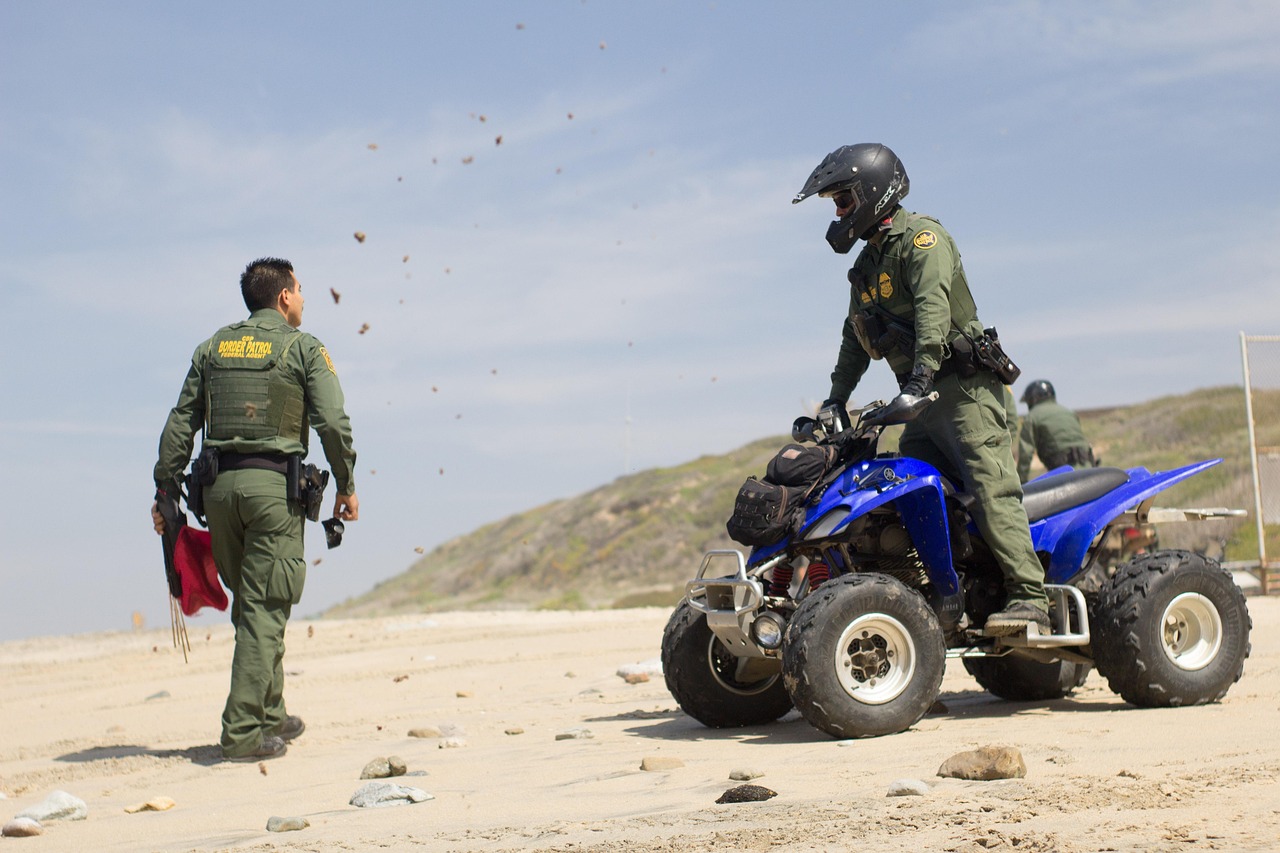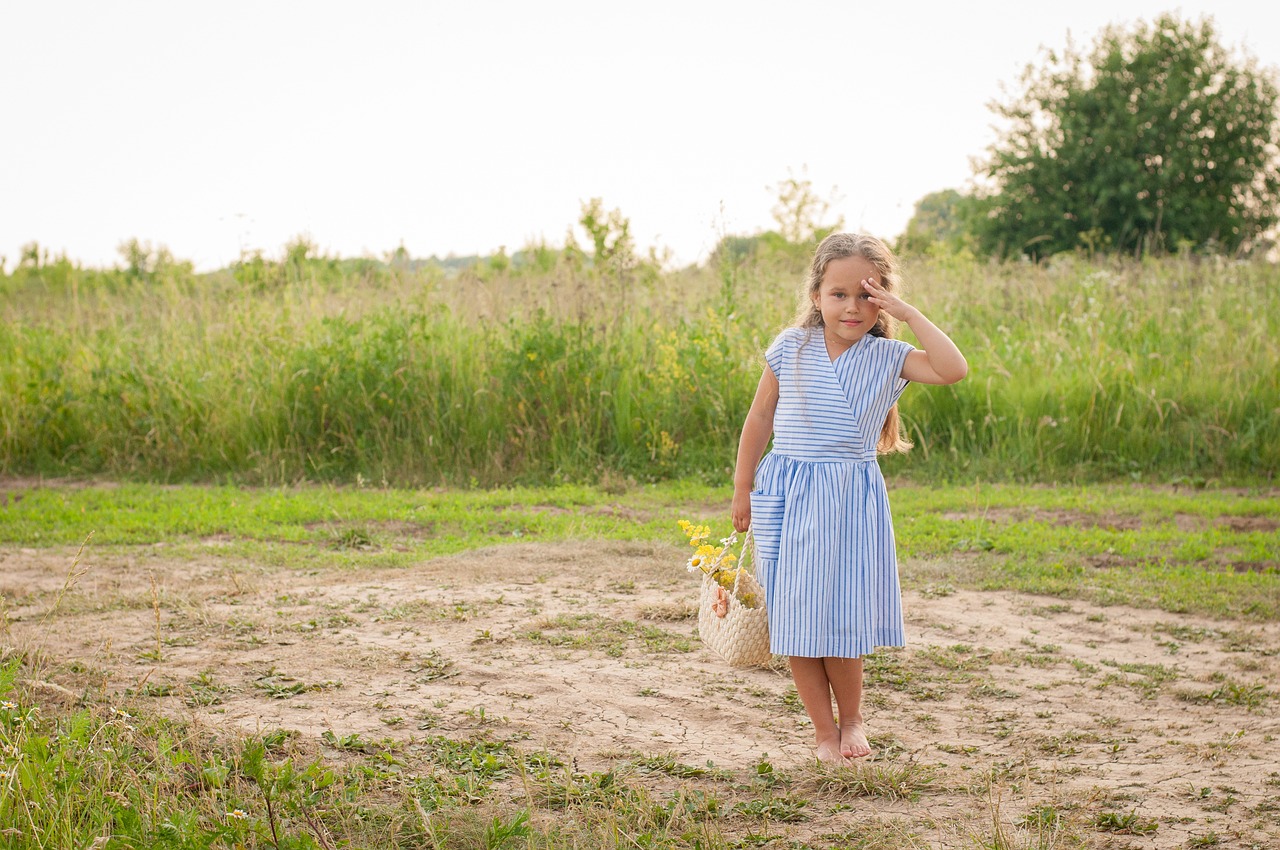This article delves into the transformation of the beloved children’s series Paw Patrol, examining its characters, themes, and the profound impact it has had on young audiences since its debut in 2013.
The Birth of Paw Patrol
To appreciate the evolution of Paw Patrol, it is essential to understand its origins. Created by Keith Chapman, the show was designed to engage preschoolers with stories that highlight teamwork, friendship, and problem-solving. Its quick rise to popularity can be attributed to its engaging animation and relatable characters, which resonated deeply with both children and parents.
Main Characters and Their Development
The characters in Paw Patrol have undergone significant growth, each exhibiting unique traits that foster a sense of connection with young viewers. This development allows children to identify with their favorite pups, enhancing their engagement with the series.
- Ryder: The Young Leader
- The Paw Patrol Team Members
Ryder, the show’s central character, exemplifies leadership and teamwork. His bravery and empathy serve as a positive example for children, illustrating the importance of helping others.
Each pup in the Paw Patrol team possesses distinct skills and personalities that contribute to the group’s success. This diversity allows children to find relatable characters, enhancing their viewing experience.
Themes of Friendship and Teamwork
At its core, Paw Patrol emphasizes the significance of friendship and teamwork. The show teaches children how to collaborate effectively to tackle challenges.
- Problem-Solving Skills
- Conflict Resolution
The series presents various scenarios that require creative thinking and collaboration, encouraging children to develop their problem-solving abilities.
Through their adventures, the characters demonstrate effective conflict resolution strategies, highlighting the importance of communication and understanding in friendships.
Impact on Early Childhood Education
Paw Patrol has emerged as a valuable tool in early childhood education, aligning with educational goals and assisting children in learning essential life skills.
- Social-Emotional Learning
- STEM Learning Opportunities
The show promotes social-emotional learning by addressing feelings, empathy, and cooperation, which are crucial for children’s development.
Incorporating elements of STEM (Science, Technology, Engineering, and Mathematics), Paw Patrol encourages curiosity and exploration among young minds.
Merchandising and Cultural Impact
The success of Paw Patrol has led to a vast array of merchandise, significantly influencing children’s culture and providing parents with educational toys and resources.
- Toy Line Expansion
- Media Spin-offs and Collaborations
The extensive toy line allows children to engage with the characters beyond the screen, enhancing imaginative play and creativity.
Various spin-offs and collaborations have emerged from Paw Patrol, broadening its reach and introducing the franchise to new audiences.
Future Directions for Paw Patrol
As Paw Patrol continues to grow, it is crucial to explore new themes and characters to keep the content fresh and engaging for future generations.
- New Characters on the Horizon
- Expanding Storylines
Introducing new characters can provide fresh dynamics and stories, ensuring that the series remains relevant and exciting for children.
Developing more complex storylines can encourage deeper engagement and critical thinking among young viewers, fostering a love for storytelling.
In conclusion, the evolution of Paw Patrol reflects its ability to adapt and grow, continually resonating with young audiences while imparting valuable lessons about teamwork, friendship, and problem-solving.
Paw Patrol,
The Evolution of Paw Patrol: How the Show Has Grown Over the Years
This article explores the transformation of the beloved children’s series Paw Patrol, discussing its characters, themes, and impact on young audiences since its debut.
The Birth of Paw Patrol
Understanding the origins of Paw Patrol provides insight into its creators’ vision and how the show quickly captured the hearts of children and parents alike. Launched in 2013, Paw Patrol was created by Keith Chapman and produced by Spin Master Entertainment. The series features a group of animated puppies led by a boy named Ryder, who work together to protect their community.
Main Characters and Their Development
The characters in Paw Patrol have evolved significantly, each showcasing unique traits and growth that resonate with young viewers, fostering a sense of connection and engagement.
- Ryder: The Young Leader
- Character Traits: Ryder embodies leadership qualities that inspire teamwork and problem-solving, making him a relatable figure for children.
- Leadership Skills: By showcasing effective leadership, Ryder teaches children valuable lessons about responsibility and collaboration in group settings.
- The Paw Patrol Team Members: Each Paw Patrol pup has distinct skills and personalities that contribute to the team’s success, allowing children to identify with their favorite characters.
Themes of Friendship and Teamwork
At its core, Paw Patrol emphasizes the importance of friendship and teamwork, teaching children how to work together to overcome challenges.
- Problem-Solving Skills: The show presents various scenarios that require creative thinking and collaboration, encouraging children to develop their problem-solving abilities.
- Conflict Resolution: Through various adventures, the characters demonstrate effective conflict resolution strategies, highlighting the value of communication and understanding in friendships.
Impact on Early Childhood Education
Paw Patrol has become a valuable tool in early childhood education, aligning with educational goals and helping children learn essential life skills.
- Social-Emotional Learning: The show promotes social-emotional learning by addressing feelings, empathy, and cooperation, which are crucial for children’s development.
- STEM Learning Opportunities: Incorporating elements of STEM (Science, Technology, Engineering, and Mathematics), Paw Patrol encourages curiosity and exploration in young minds.
Merchandising and Cultural Impact
The success of Paw Patrol has led to a vast array of merchandise, influencing children’s culture and providing parents with educational toys and resources.
- Toy Line Expansion: The extensive toy line associated with Paw Patrol allows children to engage with the characters beyond the screen, enhancing imaginative play.
- Media Spin-offs and Collaborations: Various spin-offs and collaborations have emerged from Paw Patrol, expanding its reach and introducing the franchise to new audiences.
Future Directions for Paw Patrol
As Paw Patrol continues to grow, exploring new themes and characters will be essential to keep the content fresh and engaging for future generations.
- New Characters on the Horizon: Introducing new characters can provide fresh dynamics and stories, ensuring that the series remains relevant and exciting for children.
- Expanding Storylines: Developing more complex storylines can encourage deeper engagement and critical thinking among young viewers, fostering a love for storytelling.
In conclusion, the evolution of Paw Patrol reflects its ability to adapt and resonate with young audiences. Through its emphasis on teamwork, problem-solving, and emotional learning, the show not only entertains but also educates, making it a cherished part of childhood for many.
discussing its characters, themes, and impact on young audiences since its debut.
The Evolution of Paw Patrol: How the Show Has Grown Over the Years
This article explores the transformation of the beloved children’s series Paw Patrol, discussing its characters, themes, and impact on young audiences since its debut.
The Birth of Paw Patrol
Understanding the origins of Paw Patrol provides insight into its creators’ vision and how the show quickly captured the hearts of children and parents alike. Launched in 2013, the series was created by Keith Chapman and produced by Spin Master Entertainment. The premise revolves around a group of rescue dogs led by a boy named Ryder, focusing on teamwork and problem-solving.
Main Characters and Their Development
The characters in Paw Patrol have evolved significantly, each showcasing unique traits and growth that resonate with young viewers, fostering a sense of connection and engagement.
- Ryder: The Young Leader
- Character Traits: Ryder embodies bravery and empathy, setting a positive example for young audiences.
- Leadership Skills: Through effective leadership, he teaches children valuable lessons about responsibility and collaboration.
- The Paw Patrol Team Members: Each pup has distinct skills and personalities that contribute to the team’s success, allowing children to identify with their favorite characters.
Themes of Friendship and Teamwork
At its core, Paw Patrol emphasizes the importance of friendship and teamwork, teaching children how to work together to overcome challenges.
- Problem-Solving Skills: The show presents various scenarios that require creative thinking and collaboration, encouraging children to develop their problem-solving abilities.
- Conflict Resolution: Through various adventures, the characters demonstrate effective conflict resolution strategies, highlighting the value of communication and understanding in friendships.
Impact on Early Childhood Education
Paw Patrol has become a valuable tool in early childhood education, aligning with educational goals and helping children learn essential life skills.
- Social-Emotional Learning: The show promotes social-emotional learning by addressing feelings, empathy, and cooperation, which are crucial for children’s development.
- STEM Learning Opportunities: Incorporating elements of STEM (Science, Technology, Engineering, and Mathematics), Paw Patrol encourages curiosity and exploration in young minds.
Merchandising and Cultural Impact
The success of Paw Patrol has led to a vast array of merchandise, influencing children’s culture and providing parents with educational toys and resources.
- Toy Line Expansion: The extensive toy line associated with Paw Patrol allows children to engage with the characters beyond the screen, enhancing imaginative play.
- Media Spin-offs and Collaborations: Various spin-offs and collaborations have emerged from Paw Patrol, expanding its reach and introducing the franchise to new audiences.
Future Directions for Paw Patrol
As Paw Patrol continues to grow, exploring new themes and characters will be essential to keep the content fresh and engaging for future generations.
- New Characters on the Horizon: Introducing new characters can provide fresh dynamics and stories, ensuring that the series remains relevant and exciting for children.
- Expanding Storylines: Developing more complex storylines can encourage deeper engagement and critical thinking among young viewers, fostering a love for storytelling.
In summary, Paw Patrol has evolved in numerous ways since its inception, from character development to educational impact. Its focus on teamwork, problem-solving, and emotional learning resonates with children and parents alike, proving to be a valuable asset in both entertainment and education.
The Birth of Paw Patrol
Paw Patrol, a beloved children’s animated series, has become a cultural phenomenon since its debut in 2013. Understanding the origins of Paw Patrol is crucial to appreciating its impact and success. The show was created by Keith Chapman and produced by Spin Master Entertainment in collaboration with Nickelodeon. The initial concept was born out of a desire to create a series that would not only entertain children but also impart valuable life lessons.
The inspiration behind the show came from the idea of teamwork and community service. The creators envisioned a group of heroic pups led by a young boy named Ryder, who would tackle various challenges in their community. This concept resonated with parents and children alike, as it emphasized the importance of friendship, teamwork, and problem-solving.
Paw Patrol quickly gained popularity due to its engaging stories and relatable characters. Each episode presents a new adventure, often highlighting a specific theme such as helping others, environmental awareness, or safety. The characters, each with their unique skills and personalities, allow children to identify with them, fostering a sense of connection and engagement.
At the heart of the show is Ryder, a young leader who exemplifies qualities such as bravery, empathy, and responsibility. These traits are not just entertaining; they serve as important lessons for young viewers. The show encourages children to work together and support one another, showcasing the power of collaboration in overcoming obstacles.
| Character | Role | Skills |
|---|---|---|
| Ryder | Leader | Problem-solving, communication |
| Chase | Police pup | Leadership, law enforcement |
| Marshall | Firefighter | Bravery, rescue |
| Skye | Aviator | Flying, aerial rescue |
The show also incorporates educational elements, aligning with early childhood education goals. By addressing social-emotional learning, it teaches children about feelings, empathy, and cooperation. Additionally, the incorporation of STEM concepts encourages curiosity and exploration, making learning fun and engaging.
As Paw Patrol continues to evolve, it remains committed to its core values of teamwork and friendship. The show’s success has led to a vast array of merchandise, allowing children to engage with their favorite characters beyond the screen. This expansion into toys and educational resources has further solidified Paw Patrol’s place in children’s culture.
In conclusion, the origins of Paw Patrol reveal a thoughtful approach to children’s entertainment that prioritizes both fun and education. By understanding the show’s beginnings, we can appreciate its ongoing influence on young audiences and the lessons it imparts.
Paw Patrol
The Evolution of Paw Patrol: How the Show Has Grown Over the Years
This article explores the transformation of the beloved children’s series , discussing its characters, themes, and impact on young audiences since its debut.
The Birth of Paw Patrol
Understanding the origins of provides insight into its creators’ vision and how the show quickly captured the hearts of children and parents alike. Launched in 2013 by Spin Master Entertainment, the series was designed to engage preschoolers with its vibrant animation and relatable stories.
Main Characters and Their Development
The characters in have evolved significantly, each showcasing unique traits and growth that resonate with young viewers, fostering a sense of connection and engagement.
- Ryder: The Young Leader
- Character Traits: Ryder’s characteristics, such as bravery and empathy, set a positive example for young audiences, emphasizing the importance of helping others.
- Leadership Skills: By showcasing effective leadership, Ryder teaches children valuable lessons about responsibility and collaboration in group settings.
- The Paw Patrol Team Members: Each Paw Patrol pup has distinct skills and personalities that contribute to the team’s success, allowing children to identify with their favorite characters.
Themes of Friendship and Teamwork
At its core, emphasizes the importance of friendship and teamwork, teaching children how to work together to overcome challenges.
- Problem-Solving Skills: The show presents various scenarios that require creative thinking and collaboration, encouraging children to develop their problem-solving abilities.
- Conflict Resolution: Through various adventures, the characters demonstrate effective conflict resolution strategies, highlighting the value of communication and understanding in friendships.
Impact on Early Childhood Education
has become a valuable tool in early childhood education, aligning with educational goals and helping children learn essential life skills.
- Social-Emotional Learning: The show promotes social-emotional learning by addressing feelings, empathy, and cooperation, which are crucial for children’s development.
- STEM Learning Opportunities: Incorporating elements of STEM (Science, Technology, Engineering, and Mathematics), encourages curiosity and exploration in young minds.
Merchandising and Cultural Impact
The success of has led to a vast array of merchandise, influencing children’s culture and providing parents with educational toys and resources.
- Toy Line Expansion: The extensive toy line associated with allows children to engage with the characters beyond the screen, enhancing imaginative play.
- Media Spin-offs and Collaborations: Various spin-offs and collaborations have emerged from , expanding its reach and introducing the franchise to new audiences.
Future Directions for Paw Patrol
As continues to grow, exploring new themes and characters will be essential to keep the content fresh and engaging for future generations.
- New Characters on the Horizon: Introducing new characters can provide fresh dynamics and stories, ensuring that the series remains relevant and exciting for children.
- Expanding Storylines: Developing more complex storylines can encourage deeper engagement and critical thinking among young viewers, fostering a love for storytelling.
In summary, has not only entertained millions of children but has also played a significant role in their development. With its focus on teamwork, problem-solving, and emotional intelligence, the show remains a staple in early childhood education and continues to evolve, ensuring it meets the needs of future generations.
provides insight into its creators’ vision and how the show quickly captured the hearts of children and parents alike.
The Evolution of Paw Patrol: How the Show Has Grown Over the Years
This article explores the transformation of the beloved children’s series Paw Patrol, discussing its characters, themes, and impact on young audiences since its debut.
The Birth of Paw Patrol
Understanding the origins of Paw Patrol provides insight into its creators’ vision and how the show quickly captured the hearts of children and parents alike. The series was created by Keith Chapman and premiered in 2013. It was designed to entertain while also imparting valuable life lessons. The show’s engaging storytelling and colorful animation made it an instant hit.
Main Characters and Their Development
The characters in Paw Patrol have evolved significantly, each showcasing unique traits and growth that resonate with young viewers, fostering a sense of connection and engagement.
- Ryder: The Young Leader
- Character Traits
- Leadership Skills
Ryder, the show’s central character, embodies leadership qualities that inspire teamwork and problem-solving, making him a relatable figure for children.
Ryder’s characteristics, such as bravery and empathy, set a positive example for young audiences, emphasizing the importance of helping others.
By showcasing effective leadership, Ryder teaches children valuable lessons about responsibility and collaboration in group settings.
The Paw Patrol Team Members
Each Paw Patrol pup has distinct skills and personalities that contribute to the team’s success, allowing children to identify with their favorite characters.
Themes of Friendship and Teamwork
At its core, Paw Patrol emphasizes the importance of friendship and teamwork, teaching children how to work together to overcome challenges.
- Problem-Solving Skills
- Conflict Resolution
The show presents various scenarios that require creative thinking and collaboration, encouraging children to develop their problem-solving abilities.
Through various adventures, the characters demonstrate effective conflict resolution strategies, highlighting the value of communication and understanding in friendships.
Impact on Early Childhood Education
Paw Patrol has become a valuable tool in early childhood education, aligning with educational goals and helping children learn essential life skills.
- Social-Emotional Learning
- STEM Learning Opportunities
The show promotes social-emotional learning by addressing feelings, empathy, and cooperation, which are crucial for children’s development.
Incorporating elements of STEM (Science, Technology, Engineering, and Mathematics), Paw Patrol encourages curiosity and exploration in young minds.
Merchandising and Cultural Impact
The success of Paw Patrol has led to a vast array of merchandise, influencing children’s culture and providing parents with educational toys and resources.
- Toy Line Expansion
- Media Spin-offs and Collaborations
The extensive toy line associated with Paw Patrol allows children to engage with the characters beyond the screen, enhancing imaginative play.
Various spin-offs and collaborations have emerged from Paw Patrol, expanding its reach and introducing the franchise to new audiences.
Future Directions for Paw Patrol
As Paw Patrol continues to grow, exploring new themes and characters will be essential to keep the content fresh and engaging for future generations.
- New Characters on the Horizon
- Expanding Storylines
Introducing new characters can provide fresh dynamics and stories, ensuring that the series remains relevant and exciting for children.
Developing more complex storylines can encourage deeper engagement and critical thinking among young viewers, fostering a love for storytelling.
Main Characters and Their Development
The characters in Paw Patrol are not just cute pups; they are the heart and soul of the show, each contributing uniquely to the narrative and themes of teamwork, friendship, and problem-solving. As the series has progressed, these characters have undergone significant development, which resonates deeply with its young audience, fostering both emotional connections and valuable life lessons.
At the forefront is Ryder, the young leader of the Paw Patrol team. His character is a beacon of leadership and responsibility, showcasing qualities that children can aspire to. Ryder’s bravery and empathy set a positive example, demonstrating how important it is to help others and work collaboratively. His ability to solve problems and inspire his team encourages viewers to think critically and embrace teamwork.
Each pup in the Paw Patrol brings their own set of skills and personality traits that enrich the team dynamic. For instance, Chase, the police pup, is known for his keen sense of observation and his dedication to keeping Adventure Bay safe. His character teaches children about the importance of vigilance and justice. Meanwhile, Marshall, the fire pup, embodies a fun-loving spirit, reminding kids that it’s okay to be silly while still being responsible. These contrasting personalities not only entertain but also provide children with various role models they can relate to.
Another key character is Skye, the aviator pup, who inspires young viewers to embrace their dreams and be adventurous. Her aerial skills and fearlessness encourage children to explore new horizons and tackle challenges head-on. The diversity of skills among the pups—ranging from Rocky‘s recycling expertise to Zuma‘s water rescue abilities—demonstrates the value of different talents and how they can come together to achieve a common goal.
The development of these characters is not just about their skills but also about their personal growth. Over the seasons, we see Ryder and the pups face various challenges that require them to adapt and learn from their experiences. This evolution is pivotal in teaching children about resilience and the importance of learning from mistakes. For example, when faced with a problem that seems insurmountable, the pups often brainstorm and collaborate, showcasing effective problem-solving strategies.
The emotional depth of the characters is further enhanced by their relationships with one another. The bonds of friendship among the pups are a central theme of the show, illustrating how teamwork can lead to success. Children watching Paw Patrol learn that communication, understanding, and support are essential in any friendship, which fosters their social-emotional development.
Moreover, the character arcs in Paw Patrol are designed to reflect real-life scenarios that children might encounter. Whether it’s dealing with disappointment, learning to share, or overcoming fears, these narratives provide young viewers with relatable situations that they can understand and discuss. This not only enhances their viewing experience but also equips them with tools to navigate their own social environments.
In summary, the characters in Paw Patrol are thoughtfully crafted to provide both entertainment and educational value. Their development over the years has transformed them into relatable figures that children admire and learn from. By showcasing diverse skills, fostering teamwork, and promoting emotional intelligence, Paw Patrol continues to make a significant impact on its young audience, ensuring that each episode is not just a story but a valuable lesson in life.
Paw Patrol
The Evolution of Paw Patrol: How the Show Has Grown Over the Years
This article explores the transformation of the beloved children’s series , discussing its characters, themes, and impact on young audiences since its debut.
The Birth of Paw Patrol
Understanding the origins of provides insight into its creators’ vision and how the show quickly captured the hearts of children and parents alike. Launched in 2013, the series was developed by Keith Chapman and produced by Spin Master Entertainment. The show’s concept revolves around a young boy named Ryder who leads a group of rescue dogs, each with their unique skills, to protect and serve their community.
Main Characters and Their Development
The characters in have evolved significantly, each showcasing unique traits and growth that resonate with young viewers, fostering a sense of connection and engagement.
- Ryder: The Young Leader
- Character Traits: Ryder’s characteristics, such as bravery and empathy, set a positive example for young audiences, emphasizing the importance of helping others.
- Leadership Skills: By showcasing effective leadership, Ryder teaches children valuable lessons about responsibility and collaboration in group settings.
- The Paw Patrol Team Members:
Ryder, the show’s central character, embodies leadership qualities that inspire teamwork and problem-solving, making him a relatable figure for children.
Each Paw Patrol pup has distinct skills and personalities that contribute to the team’s success, allowing children to identify with their favorite characters.
Themes of Friendship and Teamwork
At its core, emphasizes the importance of friendship and teamwork, teaching children how to work together to overcome challenges.
- Problem-Solving Skills: The show presents various scenarios that require creative thinking and collaboration, encouraging children to develop their problem-solving abilities.
- Conflict Resolution: Through various adventures, the characters demonstrate effective conflict resolution strategies, highlighting the value of communication and understanding in friendships.
Impact on Early Childhood Education
has become a valuable tool in early childhood education, aligning with educational goals and helping children learn essential life skills.
- Social-Emotional Learning: The show promotes social-emotional learning by addressing feelings, empathy, and cooperation, which are crucial for children’s development.
- STEM Learning Opportunities: Incorporating elements of STEM (Science, Technology, Engineering, and Mathematics), encourages curiosity and exploration in young minds.
Merchandising and Cultural Impact
The success of has led to a vast array of merchandise, influencing children’s culture and providing parents with educational toys and resources.
- Toy Line Expansion: The extensive toy line associated with allows children to engage with the characters beyond the screen, enhancing imaginative play.
- Media Spin-offs and Collaborations: Various spin-offs and collaborations have emerged from , expanding its reach and introducing the franchise to new audiences.
Future Directions for Paw Patrol
As continues to grow, exploring new themes and characters will be essential to keep the content fresh and engaging for future generations.
- New Characters on the Horizon: Introducing new characters can provide fresh dynamics and stories, ensuring that the series remains relevant and exciting for children.
- Expanding Storylines: Developing more complex storylines can encourage deeper engagement and critical thinking among young viewers, fostering a love for storytelling.
have evolved significantly, each showcasing unique traits and growth that resonate with young viewers, fostering a sense of connection and engagement.
The Evolution of Paw Patrol: How the Show Has Grown Over the Years
This article explores the transformation of the beloved children’s series Paw Patrol, discussing its characters, themes, and impact on young audiences since its debut.
The Birth of Paw Patrol
Understanding the origins of Paw Patrol provides insight into its creators’ vision and how the show quickly captured the hearts of children and parents alike. Launched in 2013 by Spin Master Entertainment, the series was designed to combine adventure with valuable life lessons.
Main Characters and Their Development
The characters in Paw Patrol have evolved significantly, each showcasing unique traits and growth that resonate with young viewers, fostering a sense of connection and engagement.
- Ryder: The Young Leader
- Character Traits: Ryder’s characteristics, such as bravery and empathy, set a positive example for young audiences, emphasizing the importance of helping others.
- Leadership Skills: By showcasing effective leadership, Ryder teaches children valuable lessons about responsibility and collaboration in group settings.
- The Paw Patrol Team Members
Ryder, the show’s central character, embodies leadership qualities that inspire teamwork and problem-solving, making him a relatable figure for children.
Each Paw Patrol pup has distinct skills and personalities that contribute to the team’s success, allowing children to identify with their favorite characters.
Themes of Friendship and Teamwork
At its core, Paw Patrol emphasizes the importance of friendship and teamwork, teaching children how to work together to overcome challenges.
- Problem-Solving Skills: The show presents various scenarios that require creative thinking and collaboration, encouraging children to develop their problem-solving abilities.
- Conflict Resolution: Through various adventures, the characters demonstrate effective conflict resolution strategies, highlighting the value of communication and understanding in friendships.
Impact on Early Childhood Education
Paw Patrol has become a valuable tool in early childhood education, aligning with educational goals and helping children learn essential life skills.
- Social-Emotional Learning: The show promotes social-emotional learning by addressing feelings, empathy, and cooperation, which are crucial for children’s development.
- STEM Learning Opportunities: Incorporating elements of STEM (Science, Technology, Engineering, and Mathematics), Paw Patrol encourages curiosity and exploration in young minds.
Merchandising and Cultural Impact
The success of Paw Patrol has led to a vast array of merchandise, influencing children’s culture and providing parents with educational toys and resources.
- Toy Line Expansion: The extensive toy line associated with Paw Patrol allows children to engage with the characters beyond the screen, enhancing imaginative play.
- Media Spin-offs and Collaborations: Various spin-offs and collaborations have emerged from Paw Patrol, expanding its reach and introducing the franchise to new audiences.
Future Directions for Paw Patrol
As Paw Patrol continues to grow, exploring new themes and characters will be essential to keep the content fresh and engaging for future generations.
- New Characters on the Horizon: Introducing new characters can provide fresh dynamics and stories, ensuring that the series remains relevant and exciting for children.
- Expanding Storylines: Developing more complex storylines can encourage deeper engagement and critical thinking among young viewers, fostering a love for storytelling.
Paw Patrol has captured the hearts of children worldwide, and at the center of this delightful series is Ryder, a character who embodies the essence of leadership. As the young leader of the Paw Patrol team, Ryder exemplifies qualities that not only inspire teamwork but also promote effective problem-solving skills among young viewers.
Ryder’s character is designed to be both relatable and aspirational for children. He is depicted as a brave and empathetic leader, always ready to lend a helping hand. This portrayal encourages children to see the value of assisting others and highlights the importance of community. By showcasing his willingness to tackle challenges head-on, Ryder teaches children that courage and compassion are essential traits in any leader.
One of the most significant aspects of Ryder’s leadership is his ability to bring the team together. He demonstrates effective communication skills, ensuring every member feels valued and heard. This not only fosters a sense of belonging but also encourages children to engage in collaborative efforts. The show emphasizes that teamwork is vital for success, and Ryder’s leadership style serves as a model for young viewers to emulate in their own lives.
Moreover, Ryder’s character development throughout the series illustrates the importance of learning from experiences. He encounters various challenges that require quick thinking and adaptability. Children watching these scenarios learn that problem-solving is not just about finding immediate solutions but also about understanding the situation and considering different perspectives. This approach nurtures critical thinking skills, encouraging children to analyze problems and come up with creative solutions.
Ryder’s adventurous spirit and willingness to take risks also resonate with children. He often leads the Paw Patrol on exciting missions, teaching them that failure is a part of learning. By showcasing how he handles setbacks with resilience, Ryder instills in children the idea that perseverance is key to overcoming obstacles. This message is crucial, as it helps children develop a growth mindset, enabling them to face challenges with confidence.
In addition to his leadership qualities, Ryder’s interactions with the Paw Patrol pups highlight the importance of empathy and understanding in relationships. He often takes the time to listen to his team members, addressing their concerns and celebrating their successes. This aspect of his character teaches children that effective leaders are not just authoritative figures; they are also supportive and approachable.
Overall, Ryder serves as a powerful role model for young audiences, embodying the values of teamwork, problem-solving, and empathy. His character not only entertains but also imparts valuable life lessons that resonate with children. As they follow Ryder’s adventures, they learn to embrace their own leadership potential, fostering a sense of responsibility and community involvement that will benefit them throughout their lives.
Paw Patrol has captured the hearts of children around the globe, and a significant part of its appeal lies in the character of Ryder. As the leader of the Paw Patrol team, Ryder demonstrates a range of positive characteristics that resonate deeply with young audiences. His traits of bravery and empathy not only make him a role model but also emphasize the importance of helping others in everyday life.
Bravery is one of Ryder’s most notable attributes. He consistently faces challenges head-on, whether rescuing a kitten stuck in a tree or helping a friend in need. This courage teaches children that it’s important to stand up for what is right and to confront fears rather than shy away from them. By portraying bravery in various scenarios, Ryder encourages young viewers to be courageous in their own lives, fostering a sense of confidence that is essential for personal growth.
In addition to bravery, Ryder’s empathy sets a powerful example for children. He often places himself in the shoes of others, understanding their feelings and emotions. This characteristic is crucial as it promotes a culture of kindness and compassion. When Ryder comforts a friend who is feeling down or helps a lost animal find its way home, he highlights the importance of being sensitive to the needs of others. Such lessons are invaluable at a young age, as they help cultivate emotional intelligence and social awareness.
Furthermore, Ryder’s leadership skills are intertwined with his character traits. He embodies the idea that true leaders not only guide but also listen and support their team. By showcasing effective leadership, he teaches children valuable lessons about responsibility and collaboration. This is evident when he gathers the Paw Patrol pups to discuss a plan of action, allowing each member to contribute their ideas and skills. Such teamwork fosters a sense of belonging and teaches children the importance of working together towards a common goal.
Ryder’s character also serves as a reminder of the importance of helping others. Each episode presents situations where he and the pups come to the aid of those in need, reinforcing the idea that lending a hand can make a significant difference. This theme of altruism is critical in shaping young minds, as it encourages them to think about how they can contribute positively to their communities.
In summary, Ryder’s characteristics of bravery and empathy not only entertain but also educate young audiences. By embodying these traits, he sets a positive example that encourages children to embrace their own potential for kindness and courage. As they watch Ryder navigate challenges and support his friends, they learn essential life lessons that will stay with them as they grow. The impact of such character development is profound, making Ryder an enduring figure in the hearts of children and a vital part of the Paw Patrol legacy.
In the world of children’s programming, Paw Patrol stands out not only for its entertaining stories but also for the valuable life lessons it imparts. One of the most significant aspects of the show is the character of Ryder, who serves as a beacon of effective leadership. Through his actions and decisions, Ryder teaches children essential skills that extend beyond the screen, fostering a sense of responsibility and collaboration.
Ryder’s Leadership Qualities
- Empathy: Ryder consistently demonstrates empathy, understanding the feelings and needs of his team and those they help. This quality encourages children to be more compassionate in their interactions.
- Decision-Making: Each episode presents Ryder with challenges that require thoughtful decision-making. Children learn that effective leaders weigh their options and consider the consequences of their choices.
- Encouragement: Ryder is known for his positive reinforcement, motivating his team to do their best. This aspect of leadership teaches children the importance of supporting one another.
Teaching Responsibility
Ryder’s role as a leader is not just about guiding the team; it also involves teaching them responsibility. Each pup has specific roles and duties, and Ryder emphasizes the importance of fulfilling these responsibilities to ensure the success of their missions. This dynamic encourages children to understand that teamwork relies on each member doing their part, fostering a sense of accountability.
Collaboration in Group Settings
In the adventures of Paw Patrol, collaboration is a recurring theme. Ryder often organizes his team to tackle various challenges, highlighting the importance of working together. Children watching the show see firsthand how collaboration leads to successful outcomes. This not only enhances their understanding of teamwork but also encourages them to apply these principles in their own lives, whether in school projects or group activities.
Real-Life Applications
Ryder’s leadership skills and the lessons imparted through Paw Patrol have real-life applications. Children learn that being a leader is not just about authority; it’s about inspiring others, making thoughtful decisions, and working as part of a team. These lessons are invaluable as children navigate their social environments, from playgrounds to classrooms.
Conclusion
Through the character of Ryder, Paw Patrol effectively teaches children about leadership, responsibility, and collaboration. By showcasing these qualities, the show not only entertains but also prepares young viewers for future interactions and challenges. As children engage with the series, they absorb these important life skills, which will serve them well as they grow and develop.
The Paw Patrol series has captured the hearts of children around the world, and a significant factor contributing to its success is the diverse team of pups. Each member of this heroic group possesses unique skills and distinct personalities, making them relatable and enjoyable for young audiences.
Each Paw Patrol pup has a specific role that highlights their individual strengths. This diversity allows children to connect with their favorite characters while learning valuable lessons about teamwork and collaboration.
| Pup Name | Special Skill | Personality Traits |
|---|---|---|
| Chase | Police and Traffic Control | Brave, Determined |
| Marshall | Firefighter and Medic | Clumsy, Optimistic |
| Skye | Aviation and Rescue | Adventurous, Smart |
| Rocky | Recycling and Repair | Resourceful, Creative |
| Zuma | Water Rescue | Fun-loving, Easygoing |
| Rubble | Construction and Demolition | Strong, Playful |
This variety in skills not only makes the Paw Patrol team dynamic but also provides children with the opportunity to explore different interests. For instance, children who admire Chase may develop an interest in law enforcement, while those who connect with Skye might dream of flying or aviation.
Moreover, the unique personalities of each pup foster a sense of identification among young viewers. Children often see themselves in these characters, whether it’s Marshall’s clumsiness or Rocky’s resourcefulness. This connection helps children understand that everyone has different strengths and weaknesses, promoting a healthy self-image.
Additionally, the interactions among the pups showcase the importance of teamwork. Each episode typically presents a challenge that requires the pups to work together, highlighting how their diverse abilities contribute to the group’s success. This not only entertains but also teaches children the value of collaboration and problem-solving.
As the series progresses, new characters are introduced, further enriching the narrative and providing fresh dynamics. These new additions often bring different skills and backgrounds, allowing for even more learning opportunities for children. The ongoing evolution of the Paw Patrol team keeps the content engaging and relevant, ensuring that young audiences remain captivated.
In conclusion, the Paw Patrol team members each play a vital role in the show’s success. Their distinct skills and personalities not only entertain but also serve as a valuable tool for children to learn about teamwork, individuality, and problem-solving. As children watch their favorite pups embark on various adventures, they are encouraged to embrace their own unique traits while understanding the importance of working together towards a common goal.
The themes of friendship and teamwork are central to the narrative of Paw Patrol, making it not only an entertaining show for children but also a valuable educational tool. Through its engaging storylines, the series teaches young viewers the significance of collaboration and the power of friendship in overcoming challenges.
At its core, Paw Patrol illustrates how working together can lead to successful outcomes. Each episode typically revolves around a problem that requires the combined skills and efforts of the Paw Patrol team. This not only entertains but also instills in children the idea that they can achieve more when they collaborate with others.
The diverse personalities and skills of the Paw Patrol pups serve as a perfect example of how different strengths contribute to a team’s success. For instance:
- Chase, the police pup, brings leadership and organization.
- Marshall, the fire pup, adds enthusiasm and a can-do attitude.
- Skye, the aviation expert, showcases creativity and resourcefulness.
Each character’s unique abilities highlight the importance of recognizing and valuing different contributions within a group. This representation encourages children to appreciate their own strengths and those of their peers.
The show presents various scenarios where the Paw Patrol team must work together to solve problems. These episodes often emphasize critical thinking and creativity, demonstrating that:
- Two heads are better than one when tackling a challenge.
- Effective communication is vital for successful teamwork.
Children learn that collaboration often leads to innovative solutions, fostering a mindset that values teamwork in real-life situations.
Another significant aspect of friendship depicted in Paw Patrol is how conflicts arise and can be resolved through communication. Characters often face disagreements or misunderstandings, which they navigate through dialogue and empathy. This teaches children:
- The importance of expressing their feelings.
- How to listen to others and understand different perspectives.
Such lessons are crucial for developing healthy relationships, as children learn that conflicts can be resolved positively without resorting to anger or frustration.
Paw Patrol also emphasizes the idea of community, showing how friends can come together to support one another. The pups often rally around their leader, Ryder, showcasing loyalty and commitment. This sense of belonging is essential for children, as it:
- Fosters a feeling of security.
- Encourages them to be supportive friends.
By witnessing the characters’ dedication to one another, children are inspired to build their own supportive communities, whether at school or in their neighborhoods.
Through various adventures, Paw Patrol promotes empathy, teaching children to consider the feelings of others. The characters often engage in acts of kindness, reinforcing the idea that helping others is a vital part of friendship. This is illustrated in episodes where:
- The pups assist a friend in distress.
- They work together to lift someone’s spirits.
Such narratives encourage children to practice kindness in their daily lives, nurturing their emotional intelligence and social skills.
In conclusion, the themes of friendship and teamwork in Paw Patrol are not just entertaining; they are essential lessons that resonate with young audiences. By showcasing the importance of collaboration, communication, and empathy, the show effectively prepares children for real-life interactions, fostering a generation that values teamwork and supportive relationships.
Paw Patrol
The Evolution of Paw Patrol: How the Show Has Grown Over the Years
This article explores the transformation of the beloved children’s series , discussing its characters, themes, and impact on young audiences since its debut.
The Birth of Paw Patrol
Understanding the origins of provides insight into its creators’ vision and how the show quickly captured the hearts of children and parents alike. Launched in 2013, the series was created by Keith Chapman and produced by Spin Master Entertainment. The premise revolves around a group of animated puppies led by a boy named Ryder, who work together to protect their community.
Main Characters and Their Development
The characters in have evolved significantly, each showcasing unique traits and growth that resonate with young viewers, fostering a sense of connection and engagement.
- Ryder: The Young Leader
- Character Traits
- Leadership Skills
Ryder, the show’s central character, embodies leadership qualities that inspire teamwork and problem-solving, making him a relatable figure for children.
Ryder’s characteristics, such as bravery and empathy, set a positive example for young audiences, emphasizing the importance of helping others.
By showcasing effective leadership, Ryder teaches children valuable lessons about responsibility and collaboration in group settings.
The Paw Patrol Team Members
Each Paw Patrol pup has distinct skills and personalities that contribute to the team’s success, allowing children to identify with their favorite characters. From Chase, the police pup, to Skye, the aviation expert, each character brings unique abilities that highlight teamwork.
Themes of Friendship and Teamwork
At its core, emphasizes the importance of friendship and teamwork, teaching children how to work together to overcome challenges.
- Problem-Solving Skills
- Conflict Resolution
The show presents various scenarios that require creative thinking and collaboration, encouraging children to develop their problem-solving abilities.
Through various adventures, the characters demonstrate effective conflict resolution strategies, highlighting the value of communication and understanding in friendships.
Impact on Early Childhood Education
has become a valuable tool in early childhood education, aligning with educational goals and helping children learn essential life skills.
- Social-Emotional Learning
- STEM Learning Opportunities
The show promotes social-emotional learning by addressing feelings, empathy, and cooperation, which are crucial for children’s development.
Incorporating elements of STEM (Science, Technology, Engineering, and Mathematics), encourages curiosity and exploration in young minds.
Merchandising and Cultural Impact
The success of has led to a vast array of merchandise, influencing children’s culture and providing parents with educational toys and resources.
- Toy Line Expansion
- Media Spin-offs and Collaborations
The extensive toy line associated with allows children to engage with the characters beyond the screen, enhancing imaginative play.
Various spin-offs and collaborations have emerged from , expanding its reach and introducing the franchise to new audiences.
Future Directions for Paw Patrol
As continues to grow, exploring new themes and characters will be essential to keep the content fresh and engaging for future generations.
- New Characters on the Horizon
- Expanding Storylines
Introducing new characters can provide fresh dynamics and stories, ensuring that the series remains relevant and exciting for children.
Developing more complex storylines can encourage deeper engagement and critical thinking among young viewers, fostering a love for storytelling.
emphasizes the importance of friendship and teamwork, teaching children how to work together to overcome challenges.
Paw Patrol has captured the hearts of children around the world since its debut, primarily through its engaging stories that emphasize the importance of friendship and teamwork. The show has evolved over the years, continually reinforcing these values while teaching young audiences how to work together to overcome challenges.
The show revolves around a group of heroic pups led by a boy named Ryder. Each episode presents a new challenge that requires the team to collaborate, showcasing how their unique skills contribute to solving problems. This consistent theme of teamwork not only entertains but also educates children on the significance of working together.
Teamwork is at the core of Paw Patrol. The characters often face obstacles that they cannot overcome alone. For instance, in one episode, the pups must rescue a kitten stuck in a tree. Each pup uses their special skills—like Chase’s police abilities and Marshall’s firefighting skills—to achieve a common goal. This teaches children that collaboration can lead to success.
Alongside teamwork, Paw Patrol also emphasizes the value of friendship. The characters display strong bonds, supporting each other through their adventures. This portrayal of friendship encourages children to build and maintain relationships with their peers. The show illustrates how friends can help each other in times of need, fostering a sense of community among young viewers.
The adventures in Paw Patrol often require the characters to think critically and solve problems together. For example, when faced with a natural disaster, the pups must devise a plan that utilizes each member’s strengths. This scenario teaches children about the importance of creative thinking and collective effort in overcoming challenges.
Conflict is a natural part of any relationship, and Paw Patrol addresses this through its narratives. Characters sometimes disagree on how to approach a problem, but they learn to communicate effectively and resolve their differences. This aspect of the show provides valuable lessons on communication and understanding, essential skills for children as they navigate their friendships.
Another critical aspect of teamwork portrayed in Paw Patrol is empathy. The pups often show concern for one another and those they are helping. By modeling empathetic behavior, the show encourages children to consider the feelings of others, reinforcing the idea that cooperation is not just about working together but also about caring for one another.
The lessons learned from Paw Patrol extend beyond the screen. Children can apply the principles of teamwork and friendship in their daily lives, whether in school, sports, or group activities. Parents and educators can use the show as a springboard for discussions about the importance of working together and supporting friends.
Through its engaging stories and beloved characters, Paw Patrol effectively teaches children about the importance of friendship and teamwork. By showcasing how the characters work together to overcome challenges, the show instills valuable life lessons that children can carry with them as they grow. As the series continues to evolve, its commitment to these themes remains a cornerstone of its success.
Paw Patrol has become a staple in children’s programming, not just for its entertaining stories but also for its educational value. One of the most significant aspects of the show is how it fosters problem-solving skills among its young viewers. Through engaging narratives and relatable challenges, the show encourages children to think creatively and work collaboratively.
The various scenarios presented in Paw Patrol are carefully crafted to challenge the pups and, by extension, the audience. Each episode typically involves a unique problem that requires the team to devise a solution, thereby promoting critical thinking. For instance, when a character is in trouble, the pups must assess the situation, brainstorm potential solutions, and ultimately execute a plan. This process mirrors real-life problem-solving, making it relatable and educational for children.
- Creative Thinking: Each pup has a unique skill set, which encourages children to think outside the box. For example, when the team encounters a roadblock, they must use their individual strengths to come up with an effective solution.
- Collaboration: The show emphasizes teamwork, showing how different perspectives can lead to better outcomes. Children learn that working together can often yield more effective solutions than working alone.
- Resilience: Characters often face setbacks, teaching children the importance of perseverance. They learn that failure is a part of the problem-solving process and that bouncing back is crucial.
Moreover, Paw Patrol integrates lessons on communication and negotiation as the characters discuss their ideas and come to a consensus on the best course of action. This not only teaches children how to articulate their thoughts but also how to listen to others, fostering a sense of community and respect for diverse opinions.
In addition to these skills, the show introduces various real-world scenarios that require quick thinking and adaptability. For example, when the pups encounter an unexpected situation, they must adjust their plans on the fly, mirroring the unpredictability of real life. This element of surprise keeps young viewers engaged and teaches them to remain calm under pressure.
Furthermore, the inclusion of STEM concepts in many episodes reinforces the show’s educational value. By solving problems related to science, technology, engineering, and mathematics, children are not only entertained but also introduced to essential skills that are crucial in today’s world. For instance, the pups might need to use basic engineering principles to build a bridge or employ simple math to calculate distances during a rescue mission.
In summary, the problem-solving skills highlighted in Paw Patrol serve as a vital educational tool for young audiences. By presenting scenarios that require creative thinking and collaboration, the show encourages children to develop their problem-solving abilities in a fun and engaging way. As they watch their favorite characters tackle challenges, they are inspired to apply these lessons in their own lives, fostering a generation of critical thinkers and effective collaborators.
The Paw Patrol series has captivated young audiences with its engaging characters and adventurous plots. One of the most significant themes explored in the show is conflict resolution. Through various adventures, the characters not only face challenges but also demonstrate effective strategies for resolving conflicts. This aspect of the show highlights the value of communication and understanding in friendships.
Throughout the series, the characters encounter numerous situations that could lead to misunderstandings or disagreements. For instance, when two pups have different ideas about how to approach a rescue mission, they initially struggle to agree. However, instead of allowing their differences to escalate into a conflict, they engage in open dialogue. This scenario illustrates the importance of active listening and respectful communication, which are essential skills for young viewers to learn.
Moreover, the characters often model the concept of compromise. When faced with a dilemma, they work together to find a solution that satisfies everyone involved. This teaches children that it is possible to find common ground, even when opinions differ. By showcasing these moments, Paw Patrol emphasizes that friendships can thrive when individuals are willing to consider each other’s perspectives.
| Conflict Resolution Strategies | Description |
|---|---|
| Active Listening | Encouraging individuals to listen to each other’s viewpoints without interrupting. |
| Open Communication | Promoting honest discussions about feelings and opinions to prevent misunderstandings. |
| Compromise | Finding a middle ground where all parties feel heard and valued. |
| Team Collaboration | Working together to solve problems, reinforcing the idea that teamwork can overcome obstacles. |
Additionally, the show often portrays how the characters reflect on their actions after a conflict has been resolved. This introspection encourages young viewers to think critically about their own interactions and the impact of their words and actions on others. By modeling these behaviors, Paw Patrol helps children develop essential social-emotional skills.
As the series progresses, the conflict resolution strategies depicted become more nuanced, providing opportunities for children to learn about empathy and the importance of understanding others’ feelings. These lessons resonate deeply with young audiences, as they can relate to the characters’ experiences and apply similar strategies in their own lives.
In conclusion, Paw Patrol serves as an excellent platform for teaching children about conflict resolution. By demonstrating effective communication, compromise, and teamwork, the show not only entertains but also educates its young viewers. As children watch their favorite characters navigate challenges, they learn invaluable lessons about maintaining healthy friendships and resolving conflicts in a constructive manner.
Paw Patrol has not only captured the hearts of children but has also made a significant impact on early childhood education. This beloved animated series is more than just entertainment; it serves as an educational tool that aligns with various learning objectives for young viewers.
One of the most notable contributions of Paw Patrol is its focus on social-emotional learning. The show addresses important themes such as feelings, empathy, and cooperation. By showcasing characters who navigate friendships and challenges, children learn to recognize their emotions and develop the skills necessary for healthy interactions with peers. This aspect of the show is crucial for their emotional development, helping them to understand and express their feelings in appropriate ways.
In addition to social-emotional learning, Paw Patrol incorporates elements of STEM education. The show introduces young viewers to basic concepts in Science, Technology, Engineering, and Mathematics through engaging storylines and problem-solving scenarios. For example, the pups often encounter situations that require them to use critical thinking and teamwork to find solutions. This not only fosters curiosity but also encourages children to explore and ask questions, laying the groundwork for a lifelong love of learning.
- Problem-Solving Skills: Each episode presents challenges that require creative thinking and teamwork, encouraging children to develop their problem-solving abilities.
- Conflict Resolution: The characters demonstrate effective strategies for resolving conflicts, emphasizing the importance of communication and understanding in friendships.
Moreover, Paw Patrol emphasizes the value of teamwork. The show’s central message revolves around collaboration and helping others. This is particularly important for young children, as they learn how to work together to achieve common goals. The dynamic between the characters showcases the importance of each member’s unique skills, teaching children that everyone has something valuable to contribute.
The educational impact of Paw Patrol extends beyond the screen. Many parents and educators have recognized the show’s potential as a teaching tool. By incorporating episodes into lesson plans, they can reinforce concepts of teamwork, empathy, and problem-solving in a fun and engaging way. This alignment with educational goals makes Paw Patrol a valuable resource in early childhood education settings.
Furthermore, the show has inspired a wide range of merchandise that promotes learning through play. Toys and games based on the series encourage imaginative play, allowing children to reenact scenarios they see on screen. This not only enhances their creativity but also reinforces the lessons learned from the show, making learning a holistic experience.
In conclusion, the impact of Paw Patrol on early childhood education is profound. By focusing on social-emotional learning, STEM concepts, and teamwork, the series provides children with essential life skills that will benefit them in their development. As the show continues to evolve, its commitment to education ensures that it remains a relevant and effective tool for teaching young audiences important lessons in a fun and engaging manner.
Paw Patrol
The Evolution of Paw Patrol: How the Show Has Grown Over the Years
This article explores the transformation of the beloved children’s series , discussing its characters, themes, and impact on young audiences since its debut.
The Birth of Paw Patrol
Understanding the origins of provides insight into its creators’ vision and how the show quickly captured the hearts of children and parents alike. Launched in 2013, the show was developed by Keith Chapman, who aimed to create a series that combined adventure with valuable lessons in teamwork and community service.
Main Characters and Their Development
The characters in have evolved significantly, each showcasing unique traits and growth that resonate with young viewers, fostering a sense of connection and engagement.
- Ryder: The Young Leader
- Character Traits
- Leadership Skills
Ryder, the show’s central character, embodies leadership qualities that inspire teamwork and problem-solving, making him a relatable figure for children.
Ryder’s characteristics, such as bravery and empathy, set a positive example for young audiences, emphasizing the importance of helping others.
By showcasing effective leadership, Ryder teaches children valuable lessons about responsibility and collaboration in group settings.
The Paw Patrol Team Members
Each pup has distinct skills and personalities that contribute to the team’s success, allowing children to identify with their favorite characters.
Themes of Friendship and Teamwork
At its core, emphasizes the importance of friendship and teamwork, teaching children how to work together to overcome challenges.
- Problem-Solving Skills
- Conflict Resolution
The show presents various scenarios that require creative thinking and collaboration, encouraging children to develop their problem-solving abilities.
Through various adventures, the characters demonstrate effective conflict resolution strategies, highlighting the value of communication and understanding in friendships.
Impact on Early Childhood Education
has become a valuable tool in early childhood education, aligning with educational goals and helping children learn essential life skills.
- Social-Emotional Learning
- STEM Learning Opportunities
The show promotes social-emotional learning by addressing feelings, empathy, and cooperation, which are crucial for children’s development.
Incorporating elements of STEM (Science, Technology, Engineering, and Mathematics), encourages curiosity and exploration in young minds.
Merchandising and Cultural Impact
The success of has led to a vast array of merchandise, influencing children’s culture and providing parents with educational toys and resources.
- Toy Line Expansion
- Media Spin-offs and Collaborations
The extensive toy line associated with allows children to engage with the characters beyond the screen, enhancing imaginative play.
Various spin-offs and collaborations have emerged from , expanding its reach and introducing the franchise to new audiences.
Future Directions for Paw Patrol
As continues to grow, exploring new themes and characters will be essential to keep the content fresh and engaging for future generations.
- New Characters on the Horizon
- Expanding Storylines
Introducing new characters can provide fresh dynamics and stories, ensuring that the series remains relevant and exciting for children.
Developing more complex storylines can encourage deeper engagement and critical thinking among young viewers, fostering a love for storytelling.
has become a valuable tool in early childhood education, aligning with educational goals and helping children learn essential life skills.
Paw Patrol has evolved into a significant asset in early childhood education, aligning with educational goals and helping children learn essential life skills. The show’s engaging characters and relatable storylines provide a platform for children to explore various concepts, including teamwork, problem-solving, and emotional intelligence.
Understanding the Educational Value
At its core, Paw Patrol promotes essential skills that are vital for children’s development. The series introduces young viewers to the importance of friendship and teamwork, teaching them how to collaborate effectively to overcome challenges. Through the adventures of Ryder and his team of pups, children learn that working together can lead to successful outcomes.
Social-Emotional Learning
- The show addresses feelings and emotions, helping children identify and express their own.
- Character interactions model empathy and understanding, essential components of social-emotional learning.
- By watching the characters navigate conflicts, children gain insights into resolving disputes amicably.
STEM Learning Opportunities
Paw Patrol incorporates elements of STEM (Science, Technology, Engineering, and Mathematics), encouraging curiosity and exploration. Each episode presents scenarios that require critical thinking and creativity, fostering a love for learning:
- Children learn basic engineering concepts as they watch the pups use their unique skills to solve problems.
- Scientific principles are introduced through various missions, sparking interest in the natural world.
- Technology is showcased through the use of gadgets and tools, promoting an understanding of how these elements work together.
Impact on Early Childhood Education
The alignment of Paw Patrol with educational goals makes it a valuable resource for teachers and parents alike. By integrating the show’s themes into educational settings, caregivers can enhance learning experiences:
- Teachers can use episodes to initiate discussions on teamwork and cooperation.
- Parents can engage children in activities that reinforce the lessons learned from the show.
- The series serves as a springboard for lessons on responsibility and leadership, as exemplified by Ryder.
Merchandising and Learning Tools
The success of Paw Patrol has led to an extensive range of merchandise that supports educational play. Toys and games related to the series encourage imaginative play, allowing children to reenact scenarios and apply problem-solving skills in real-life situations. This hands-on approach reinforces the lessons from the show and promotes active learning.
Future Directions
As Paw Patrol continues to grow, it is essential to explore new themes and characters that reflect the changing landscape of education and childhood development. Introducing new characters can provide fresh dynamics and stories, ensuring that the series remains relevant and engaging for children:
- New storylines can address contemporary issues, preparing children for the challenges they may face.
- Expanding the range of characters can promote diversity and inclusion, allowing more children to see themselves represented.
In conclusion, Paw Patrol has become more than just a children’s television series; it is a powerful tool for early childhood education. By aligning with educational goals and fostering essential life skills, the show plays a crucial role in shaping young minds. Its impact on social-emotional learning, STEM education, and imaginative play makes it a valuable resource for parents and educators alike.
Paw Patrol, a beloved children’s series, has not only entertained young audiences but has also played a crucial role in promoting social-emotional learning. This aspect of the show is vital as it addresses key elements such as feelings, empathy, and cooperation, which are essential for children’s overall development.
Social-emotional learning (SEL) refers to the processes through which children learn to understand and manage their emotions, set positive goals, show empathy for others, establish positive relationships, and make responsible decisions. Paw Patrol effectively incorporates these principles, making it a valuable resource for parents and educators alike.
The show features various scenarios where characters experience a range of emotions, from joy to sadness. By depicting these feelings, Paw Patrol helps children recognize and validate their own emotions. For instance, when a pup feels nervous before a mission, it opens a dialogue about anxiety and how to cope with it. This portrayal encourages children to express their feelings openly and understand that it’s okay to feel vulnerable.
Empathy is a cornerstone of social-emotional learning, and Paw Patrol excels in showcasing this value. Each episode often revolves around the pups helping others in need, teaching young viewers the importance of putting themselves in someone else’s shoes. For example, when a character helps a friend who is feeling down, it illustrates the power of kindness and understanding. Such narratives encourage children to develop a sense of compassion and motivate them to support their peers.
Another significant aspect of social-emotional learning highlighted in the show is cooperation. The Paw Patrol team must work together to solve problems and overcome challenges, demonstrating the importance of teamwork. Children learn that by collaborating and communicating effectively, they can achieve common goals. This lesson is particularly relevant as it mirrors real-life situations where teamwork is essential, whether in school projects or community activities.
Conflict is a natural part of social interactions, and Paw Patrol teaches children valuable conflict resolution skills. Through various adventures, the characters encounter disagreements and misunderstandings, which they navigate with effective communication and compromise. By watching these scenarios unfold, children can learn strategies for resolving conflicts peacefully, fostering a sense of harmony in their own relationships.
Through its engaging storylines, Paw Patrol emphasizes the importance of building and maintaining positive relationships. The interactions among the characters illustrate trust, loyalty, and respect, serving as a model for young viewers. When children see their favorite characters supporting one another through challenges, they are more likely to emulate these behaviors in their friendships.
Parents and educators can leverage the themes presented in Paw Patrol to foster discussions around social-emotional learning. For example, after watching an episode, caregivers can ask children how they would feel in a similar situation or how they might help a friend in need. Such conversations can deepen children’s understanding of their emotions and enhance their empathy.
In conclusion, Paw Patrol is more than just an entertaining show; it serves as a significant educational tool that promotes social-emotional learning. By addressing feelings, empathy, cooperation, and conflict resolution, the series equips children with essential life skills that will benefit them as they grow. The show’s ability to weave these important lessons into engaging narratives ensures that young audiences not only enjoy the adventures of the Paw Patrol team but also learn valuable lessons that will last a lifetime.
STEM Learning Opportunities have become a vital aspect of children’s education, and Paw Patrol effectively incorporates these elements into its storyline. By weaving in themes of Science, Technology, Engineering, and Mathematics, the show not only entertains but also educates young viewers, fostering a love for learning.
The show introduces various scientific concepts through its engaging adventures. For instance, episodes often feature the importance of understanding the environment, which can spark children’s interest in ecology and biology. By depicting characters who solve problems using scientific methods, the show encourages children to think critically and ask questions about the world around them.
- Technology: The use of high-tech gadgets by the Paw Patrol team showcases the role of technology in problem-solving. Children learn how tools can be utilized to assist in emergencies and everyday situations.
- Engineering: The pups often need to construct or repair devices to complete their missions. This introduces young viewers to basic engineering principles, such as design and structure, while highlighting the importance of teamwork in achieving goals.
- Mathematics: Many episodes incorporate counting, shapes, and measurements, subtly teaching children essential math skills through fun and relatable scenarios.
Moreover, Paw Patrol fosters a sense of curiosity and exploration among its audience. Each episode presents challenges that require the characters to apply their knowledge and skills in innovative ways. This not only captivates the children but also inspires them to engage in similar problem-solving activities in their own lives.
Through its adventures, the show emphasizes the significance of collaboration in STEM fields. The Paw Patrol team exemplifies how diverse skills can come together to tackle complex challenges. This representation encourages children to appreciate the value of teamwork and the idea that different perspectives can lead to better solutions.
In addition to promoting STEM concepts, Paw Patrol also aligns with educational standards, making it an effective tool for parents and educators. Teachers can utilize the show’s themes to create lesson plans that reinforce STEM learning in a fun and engaging manner. For example, after watching an episode, children can participate in hands-on activities that mirror the challenges faced by the characters, such as building a simple structure or conducting a science experiment.
Furthermore, the show’s impact extends beyond the screen, as it has inspired a range of educational toys and games designed to enhance STEM learning. These products allow children to explore concepts in a tactile way, reinforcing what they have learned through the show.
As Paw Patrol continues to evolve, it is likely that the integration of STEM elements will become even more pronounced. The show’s creators understand the importance of preparing young minds for the future, and by incorporating educational themes into their narratives, they are not only entertaining children but also equipping them with essential skills for success in a rapidly changing world.
Paw Patrol
The Evolution of Paw Patrol: How the Show Has Grown Over the Years
This article explores the transformation of the beloved children’s series , discussing its characters, themes, and impact on young audiences since its debut.
The Birth of Paw Patrol
Understanding the origins of provides insight into its creators’ vision and how the show quickly captured the hearts of children and parents alike. Launched in 2013, the series was created by Keith Chapman and produced by Spin Master Entertainment. The concept revolves around a group of rescue dogs led by a boy named Ryder, who work together to protect their community.
Main Characters and Their Development
The characters in have evolved significantly, each showcasing unique traits and growth that resonate with young viewers, fostering a sense of connection and engagement.
- Ryder: The Young Leader
- Character Traits
- Leadership Skills
- The Paw Patrol Team Members
Ryder, the show’s central character, embodies leadership qualities that inspire teamwork and problem-solving, making him a relatable figure for children.
Ryder’s characteristics, such as bravery and empathy, set a positive example for young audiences, emphasizing the importance of helping others.
By showcasing effective leadership, Ryder teaches children valuable lessons about responsibility and collaboration in group settings.
Each Paw Patrol pup has distinct skills and personalities that contribute to the team’s success, allowing children to identify with their favorite characters.
Themes of Friendship and Teamwork
At its core, emphasizes the importance of friendship and teamwork, teaching children how to work together to overcome challenges.
- Problem-Solving Skills
- Conflict Resolution
The show presents various scenarios that require creative thinking and collaboration, encouraging children to develop their problem-solving abilities.
Through various adventures, the characters demonstrate effective conflict resolution strategies, highlighting the value of communication and understanding in friendships.
Impact on Early Childhood Education
has become a valuable tool in early childhood education, aligning with educational goals and helping children learn essential life skills.
- Social-Emotional Learning
- STEM Learning Opportunities
The show promotes social-emotional learning by addressing feelings, empathy, and cooperation, which are crucial for children’s development.
Incorporating elements of STEM (Science, Technology, Engineering, and Mathematics), encourages curiosity and exploration in young minds.
Merchandising and Cultural Impact
The success of has led to a vast array of merchandise, influencing children’s culture and providing parents with educational toys and resources.
- Toy Line Expansion
- Media Spin-offs and Collaborations
The extensive toy line associated with allows children to engage with the characters beyond the screen, enhancing imaginative play.
Various spin-offs and collaborations have emerged from , expanding its reach and introducing the franchise to new audiences.
Future Directions for Paw Patrol
As continues to grow, exploring new themes and characters will be essential to keep the content fresh and engaging for future generations.
- New Characters on the Horizon
- Expanding Storylines
Introducing new characters can provide fresh dynamics and stories, ensuring that the series remains relevant and exciting for children.
Developing more complex storylines can encourage deeper engagement and critical thinking among young viewers, fostering a love for storytelling.
encourages curiosity and exploration in young minds.
The Evolution of Paw Patrol: How the Show Has Grown Over the Years
This article explores the transformation of the beloved children’s series Paw Patrol, discussing its characters, themes, and impact on young audiences since its debut.
The Birth of Paw Patrol
Understanding the origins of Paw Patrol provides insight into its creators’ vision and how the show quickly captured the hearts of children and parents alike.
Main Characters and Their Development
The characters in Paw Patrol have evolved significantly, each showcasing unique traits and growth that resonate with young viewers, fostering a sense of connection and engagement.
- Ryder: The Young Leader
- Ryder, the show’s central character, embodies leadership qualities that inspire teamwork and problem-solving, making him a relatable figure for children.
- Character Traits
- Ryder’s characteristics, such as bravery and empathy, set a positive example for young audiences, emphasizing the importance of helping others.
- Leadership Skills
- By showcasing effective leadership, Ryder teaches children valuable lessons about responsibility and collaboration in group settings.
- The Paw Patrol Team Members
- Each Paw Patrol pup has distinct skills and personalities that contribute to the team’s success, allowing children to identify with their favorite characters.
Themes of Friendship and Teamwork
At its core, Paw Patrol emphasizes the importance of friendship and teamwork, teaching children how to work together to overcome challenges.
- Problem-Solving Skills
- The show presents various scenarios that require creative thinking and collaboration, encouraging children to develop their problem-solving abilities.
- Conflict Resolution
- Through various adventures, the characters demonstrate effective conflict resolution strategies, highlighting the value of communication and understanding in friendships.
Impact on Early Childhood Education
Paw Patrol has become a valuable tool in early childhood education, aligning with educational goals and helping children learn essential life skills.
- Social-Emotional Learning
- The show promotes social-emotional learning by addressing feelings, empathy, and cooperation, which are crucial for children’s development.
- STEM Learning Opportunities
- Incorporating elements of STEM (Science, Technology, Engineering, and Mathematics), Paw Patrol encourages curiosity and exploration in young minds.
Merchandising and Cultural Impact
The success of Paw Patrol has led to a vast array of merchandise, influencing children’s culture and providing parents with educational toys and resources.
- Toy Line Expansion
- The extensive toy line associated with Paw Patrol allows children to engage with the characters beyond the screen, enhancing imaginative play.
- Media Spin-offs and Collaborations
- Various spin-offs and collaborations have emerged from Paw Patrol, expanding its reach and introducing the franchise to new audiences.
Future Directions for Paw Patrol
As Paw Patrol continues to grow, exploring new themes and characters will be essential to keep the content fresh and engaging for future generations.
- New Characters on the Horizon
- Introducing new characters can provide fresh dynamics and stories, ensuring that the series remains relevant and exciting for children.
- Expanding Storylines
- Developing more complex storylines can encourage deeper engagement and critical thinking among young viewers, fostering a love for storytelling.
In conclusion, Paw Patrol has successfully evolved over the years, maintaining its relevance and appeal to young audiences. By continuously introducing new characters and themes while emphasizing important values, the show not only entertains but also educates, making it a staple in children’s programming.
The success of Paw Patrol can be attributed to its innovative approach to children’s entertainment, which seamlessly blends education with engaging narratives. This beloved series has not only entertained millions of young viewers but has also made a significant cultural impact through its extensive merchandising and media presence.
One of the most notable aspects of Paw Patrol is its vast array of merchandise that has become a staple in children’s toys. The franchise has expanded to include action figures, playsets, clothing, and even themed birthday party supplies. This extensive toy line allows children to immerse themselves in the Paw Patrol universe, promoting imaginative play and creativity.
- Action Figures: Each character is available as a collectible figure, allowing children to recreate their favorite scenes.
- Playsets: Themed playsets, such as the Paw Patrol Lookout Tower, provide interactive experiences for kids.
- Clothing: Apparel featuring the characters allows young fans to express their love for the show.
The impact of Paw Patrol on children’s culture extends beyond toys. The show has become a common topic of conversation among peers, fostering social interactions and shared experiences. Children often engage in role-playing games, where they embody their favorite characters, thus enhancing their social skills and creativity.
Many Paw Patrol toys are designed not just for fun but also to promote learning. For instance, building sets can introduce basic engineering concepts, while puzzles featuring the characters can enhance problem-solving skills. This educational aspect of the merchandise aligns with the show’s core themes of teamwork and community service.
The success of Paw Patrol has led to numerous spin-offs and collaborations, further solidifying its place in popular culture. For example, the franchise has ventured into various forms of media, including:
- Books: Storybooks and activity books expand on the adventures of the pups, encouraging reading and comprehension skills.
- Movies: The release of feature-length films has introduced the characters to new audiences, creating a broader fan base.
- Video Games: Interactive games allow children to engage with the characters in new and exciting ways, promoting digital literacy.
Paw Patrol has not only resonated with audiences in North America but has also achieved global success. The show has been localized in various languages, adapting to different cultures while maintaining its core values. This international appeal has resulted in a diverse fan base, making Paw Patrol a truly global phenomenon.
As Paw Patrol continues to evolve, its merchandising strategies are likely to expand further. With the introduction of new characters and themes, the potential for innovative products remains high. The franchise’s ability to adapt and grow will ensure that it remains relevant in the ever-changing landscape of children’s entertainment.
In conclusion, the success of Paw Patrol lies not only in its entertaining content but also in its extensive merchandising efforts and cultural impact. By fostering creativity, social skills, and educational opportunities, Paw Patrol has established itself as an influential force in the lives of young children and their families.
Paw Patrol
The Evolution of Paw Patrol: How the Show Has Grown Over the Years
This article explores the transformation of the beloved children’s series , discussing its characters, themes, and impact on young audiences since its debut.
The Birth of Paw Patrol
Understanding the origins of provides insight into its creators’ vision and how the show quickly captured the hearts of children and parents alike. Launched in 2013, the series was created by Keith Chapman and produced by Spin Master Entertainment. Its premise revolves around a group of rescue dogs led by a boy named Ryder, who work together to protect their community.
Main Characters and Their Development
The characters in have evolved significantly, each showcasing unique traits and growth that resonate with young viewers, fostering a sense of connection and engagement.
- Ryder: The Young Leader
- Character Traits: Ryder’s characteristics, such as bravery and empathy, set a positive example for young audiences, emphasizing the importance of helping others.
- Leadership Skills: By showcasing effective leadership, Ryder teaches children valuable lessons about responsibility and collaboration in group settings.
- The Paw Patrol Team Members
Ryder, the show’s central character, embodies leadership qualities that inspire teamwork and problem-solving, making him a relatable figure for children.
Each Paw Patrol pup has distinct skills and personalities that contribute to the team’s success, allowing children to identify with their favorite characters.
Themes of Friendship and Teamwork
At its core, emphasizes the importance of friendship and teamwork, teaching children how to work together to overcome challenges.
- Problem-Solving Skills: The show presents various scenarios that require creative thinking and collaboration, encouraging children to develop their problem-solving abilities.
- Conflict Resolution: Through various adventures, the characters demonstrate effective conflict resolution strategies, highlighting the value of communication and understanding in friendships.
Impact on Early Childhood Education
has become a valuable tool in early childhood education, aligning with educational goals and helping children learn essential life skills.
- Social-Emotional Learning: The show promotes social-emotional learning by addressing feelings, empathy, and cooperation, which are crucial for children’s development.
- STEM Learning Opportunities: Incorporating elements of STEM (Science, Technology, Engineering, and Mathematics), encourages curiosity and exploration in young minds.
Merchandising and Cultural Impact
The success of has led to a vast array of merchandise, influencing children’s culture and providing parents with educational toys and resources.
- Toy Line Expansion: The extensive toy line associated with allows children to engage with the characters beyond the screen, enhancing imaginative play.
- Media Spin-offs and Collaborations: Various spin-offs and collaborations have emerged from , expanding its reach and introducing the franchise to new audiences.
Future Directions for Paw Patrol
As continues to grow, exploring new themes and characters will be essential to keep the content fresh and engaging for future generations.
- New Characters on the Horizon: Introducing new characters can provide fresh dynamics and stories, ensuring that the series remains relevant and exciting for children.
- Expanding Storylines: Developing more complex storylines can encourage deeper engagement and critical thinking among young viewers, fostering a love for storytelling.
has led to a vast array of merchandise, influencing children’s culture and providing parents with educational toys and resources.
The Evolution of Paw Patrol: How the Show Has Grown Over the Years
This article explores the transformation of the beloved children’s series Paw Patrol, discussing its characters, themes, and impact on young audiences since its debut.
The Birth of Paw Patrol
Understanding the origins of Paw Patrol provides insight into its creators’ vision and how the show quickly captured the hearts of children and parents alike. Launched in 2013, the series was created by Keith Chapman and produced by Spin Master Entertainment. The show focuses on a group of rescue dogs led by a boy named Ryder, who work together to protect their community.
Main Characters and Their Development
The characters in Paw Patrol have evolved significantly, each showcasing unique traits and growth that resonate with young viewers, fostering a sense of connection and engagement.
- Ryder: The Young Leader
- Character Traits: Ryder’s characteristics, such as bravery and empathy, set a positive example for young audiences, emphasizing the importance of helping others.
- Leadership Skills: By showcasing effective leadership, Ryder teaches children valuable lessons about responsibility and collaboration in group settings.
- The Paw Patrol Team Members: Each Paw Patrol pup has distinct skills and personalities that contribute to the team’s success, allowing children to identify with their favorite characters.
Themes of Friendship and Teamwork
At its core, Paw Patrol emphasizes the importance of friendship and teamwork, teaching children how to work together to overcome challenges.
- Problem-Solving Skills: The show presents various scenarios that require creative thinking and collaboration, encouraging children to develop their problem-solving abilities.
- Conflict Resolution: Through various adventures, the characters demonstrate effective conflict resolution strategies, highlighting the value of communication and understanding in friendships.
Impact on Early Childhood Education
Paw Patrol has become a valuable tool in early childhood education, aligning with educational goals and helping children learn essential life skills.
- Social-Emotional Learning: The show promotes social-emotional learning by addressing feelings, empathy, and cooperation, which are crucial for children’s development.
- STEM Learning Opportunities: Incorporating elements of STEM (Science, Technology, Engineering, and Mathematics), Paw Patrol encourages curiosity and exploration in young minds.
Merchandising and Cultural Impact
The success of Paw Patrol has led to a vast array of merchandise, influencing children’s culture and providing parents with educational toys and resources. The extensive toy line associated with Paw Patrol allows children to engage with the characters beyond the screen, enhancing imaginative play.
- Toy Line Expansion: The variety of toys, from action figures to playsets, enables children to recreate their favorite scenes and adventures from the show.
- Media Spin-offs and Collaborations: Various spin-offs and collaborations have emerged from Paw Patrol, expanding its reach and introducing the franchise to new audiences.
Future Directions for Paw Patrol
As Paw Patrol continues to grow, exploring new themes and characters will be essential to keep the content fresh and engaging for future generations.
- New Characters on the Horizon: Introducing new characters can provide fresh dynamics and stories, ensuring that the series remains relevant and exciting for children.
- Expanding Storylines: Developing more complex storylines can encourage deeper engagement and critical thinking among young viewers, fostering a love for storytelling.
The Paw Patrol franchise has not only captured the hearts of children through its engaging storylines and lovable characters, but it has also established a remarkable toy line that has expanded significantly since the show’s inception. This extensive toy line allows children to immerse themselves in the world of Paw Patrol, enhancing their imaginative play and providing endless opportunities for creativity.
Initially launched with a few key characters, the Paw Patrol toy line has grown to include a vast array of products, catering to different age groups and interests. The toys range from action figures and playsets to plush toys and vehicles, each designed to replicate the adventures seen in the show. This variety not only appeals to children but also encourages parents to engage in playtime with their kids, fostering stronger family bonds.
- Action Figures: Children can collect their favorite pups, each with unique outfits and accessories, allowing them to recreate scenes from the show.
- Playsets: Themed playsets, such as the Paw Patrol Lookout Tower, provide an interactive environment where kids can enact rescue missions.
- Vehicles: Each pup comes with their own vehicle, promoting imaginative scenarios and enhancing the play experience.
- Plush Toys: Soft and cuddly versions of the characters are perfect for younger children, offering comfort and companionship.
The Paw Patrol toy line is not just about fun; it also incorporates educational elements. Many of the toys promote STEM learning by encouraging problem-solving and critical thinking. For instance, playsets often involve challenges that require children to think creatively about how to assist the characters in their missions.
Furthermore, the toys can serve as tools for social-emotional learning. As children engage in role-playing scenarios, they learn about teamwork, empathy, and communication, mirroring the core themes of the show. This aspect is particularly important as it helps children navigate their own social interactions in real life.
To keep the excitement alive, the Paw Patrol toy line frequently releases seasonal and special edition toys. These limited-time offerings often coincide with holidays or major events, such as movie releases or anniversaries. Such strategies not only boost sales but also keep fans eagerly anticipating new products.
For example, during the holiday season, exclusive gift sets that feature multiple characters and accessories are launched, making them perfect for gifting. These sets often include unique items that aren’t available in the regular toy line, making them highly sought after by collectors and fans alike.
The Paw Patrol brand has also engaged in various collaborations and cross-promotions that further enhance its toy line. Partnerships with major retailers and popular brands have led to the creation of themed merchandise that appeals to both children and parents. For instance, collaborations with snack brands or clothing lines have resulted in co-branded products that resonate with the show’s audience.
These partnerships not only expand the reach of the Paw Patrol franchise but also introduce the characters to new audiences. By integrating the beloved pups into everyday products, the franchise remains relevant and continues to grow its fan base.
In summary, the Paw Patrol toy line is a vibrant and evolving extension of the beloved television series. With its diverse range of products, educational value, and strategic collaborations, it continues to engage children and parents alike, making playtime a fun and enriching experience.
Paw Patrol
The Evolution of Paw Patrol: How the Show Has Grown Over the Years
This article explores the transformation of the beloved children’s series , discussing its characters, themes, and impact on young audiences since its debut.
The Birth of Paw Patrol
Understanding the origins of provides insight into its creators’ vision and how the show quickly captured the hearts of children and parents alike. Launched in 2013, the series was developed by Keith Chapman and produced by Spin Master Entertainment. It quickly became a global phenomenon, appealing to preschoolers and their families through its engaging storytelling and vibrant animation.
Main Characters and Their Development
The characters in have evolved significantly, each showcasing unique traits and growth that resonate with young viewers, fostering a sense of connection and engagement.
- Ryder: The Young Leader
- Character Traits: Ryder’s characteristics, such as bravery and empathy, set a positive example for young audiences, emphasizing the importance of helping others.
- Leadership Skills: By showcasing effective leadership, Ryder teaches children valuable lessons about responsibility and collaboration in group settings.
- The Paw Patrol Team Members: Each Paw Patrol pup has distinct skills and personalities that contribute to the team’s success, allowing children to identify with their favorite characters.
Themes of Friendship and Teamwork
At its core, emphasizes the importance of friendship and teamwork, teaching children how to work together to overcome challenges.
- Problem-Solving Skills: The show presents various scenarios that require creative thinking and collaboration, encouraging children to develop their problem-solving abilities.
- Conflict Resolution: Through various adventures, the characters demonstrate effective conflict resolution strategies, highlighting the value of communication and understanding in friendships.
Impact on Early Childhood Education
has become a valuable tool in early childhood education, aligning with educational goals and helping children learn essential life skills.
- Social-Emotional Learning: The show promotes social-emotional learning by addressing feelings, empathy, and cooperation, which are crucial for children’s development.
- STEM Learning Opportunities: Incorporating elements of STEM (Science, Technology, Engineering, and Mathematics), encourages curiosity and exploration in young minds.
Merchandising and Cultural Impact
The success of has led to a vast array of merchandise, influencing children’s culture and providing parents with educational toys and resources.
- Toy Line Expansion: The extensive toy line associated with allows children to engage with the characters beyond the screen, enhancing imaginative play.
- Media Spin-offs and Collaborations: Various spin-offs and collaborations have emerged from , expanding its reach and introducing the franchise to new audiences.
Future Directions for Paw Patrol
As continues to grow, exploring new themes and characters will be essential to keep the content fresh and engaging for future generations.
- New Characters on the Horizon: Introducing new characters can provide fresh dynamics and stories, ensuring that the series remains relevant and exciting for children.
- Expanding Storylines: Developing more complex storylines can encourage deeper engagement and critical thinking among young viewers, fostering a love for storytelling.
In conclusion, has significantly evolved since its inception, adapting to the changing needs and interests of its audience while maintaining its core values of teamwork, friendship, and problem-solving.
allows children to engage with the characters beyond the screen, enhancing imaginative play.
Paw Patrol has become a cultural phenomenon, captivating children around the world since its debut. The show, which features a group of rescue dogs led by a boy named Ryder, not only entertains but also educates young viewers about teamwork, problem-solving, and community service. One of the most significant aspects of Paw Patrol is its ability to allow children to engage with the characters beyond the screen, enhancing imaginative play.
The Importance of Imaginative Play
Imaginative play is crucial for children’s development as it fosters creativity, social skills, and emotional understanding. When children engage with their favorite Paw Patrol characters through toys, costumes, and games, they enter a world where they can create their own adventures. This not only enhances their cognitive abilities but also allows them to express their feelings and thoughts in a safe environment.
Engaging with Characters Through Merchandise
| Type of Merchandise | Benefits |
|---|---|
| Toys | Encourages role-playing and creativity. |
| Costumes | Promotes active play and physical engagement. |
| Books | Enhances literacy skills and storytelling. |
| Games | Develops critical thinking and problem-solving skills. |
Building Connections with Characters
Each character in Paw Patrol has unique traits and skills that resonate with children. For example, Chase embodies leadership and bravery, while Skye showcases intelligence and resourcefulness. By playing with these characters, children can identify with their strengths and learn to overcome challenges in their own lives.
Encouraging Social Interaction
Playing with Paw Patrol toys often involves cooperative play with peers or siblings. This social interaction is vital for developing communication skills and understanding teamwork. Children learn to negotiate roles, share responsibilities, and work towards common goals, mirroring the teamwork exhibited in the show.
Incorporating Educational Themes
The adventures of Paw Patrol often revolve around problem-solving and conflict resolution, which can be mirrored in children’s play. For instance, when children create scenarios where they must rescue a toy or solve a problem, they practice critical thinking and collaboration. This type of play not only reinforces lessons from the show but also encourages children to think creatively about solutions.
Expanding the Paw Patrol Universe
- New Characters: The introduction of new pups and characters keeps the franchise fresh and exciting, allowing children to explore new dynamics and stories.
- Media Spin-offs: Various spin-offs and collaborations expand the Paw Patrol universe, introducing new adventures that promote imaginative play.
Conclusion
In summary, Paw Patrol has not only entertained children but has also provided them with tools for imaginative play. By engaging with the characters through various forms of merchandise, children can enhance their creativity, social skills, and problem-solving abilities. The show’s emphasis on teamwork and friendship further enriches the play experience, making it a valuable resource for both parents and educators.
Media Spin-offs and Collaborations have played a significant role in the expansion of the Paw Patrol franchise, allowing it to reach new audiences while maintaining its core values of teamwork, friendship, and problem-solving. The success of the original series has paved the way for a variety of creative projects that both enhance and diversify the Paw Patrol universe.
One of the most notable spin-offs is Paw Patrol: Mighty Pups, which introduces enhanced abilities for the beloved pups. This series not only captivates the existing fan base but also attracts new viewers by offering fresh narratives that emphasize heroism and teamwork. The introduction of superpowers allows for more dynamic storytelling, showcasing how the pups use their unique skills to overcome obstacles in imaginative ways.
In addition to spin-offs, Paw Patrol has engaged in various collaborations with other popular franchises. For instance, the crossover episodes with Blaze and the Monster Machines have been particularly well-received. These collaborations not only enrich the viewing experience but also introduce educational elements from both series, reinforcing the importance of science and engineering concepts in an entertaining manner.
Moreover, the franchise has ventured into theatrical releases, such as the Paw Patrol movie, which further expands its narrative scope. The film presents an opportunity for deeper character development and more complex storylines, appealing to both children and their parents. By transitioning from television to the big screen, Paw Patrol has successfully broadened its audience and increased its cultural impact.
The merchandise associated with Paw Patrol also reflects its extensive collaborations. Toys, books, and educational materials based on spin-off content encourage children to engage with the series in various ways. This multi-faceted approach not only enhances play but also reinforces the educational themes present in the show.
Another significant aspect of the franchise’s growth is its international collaborations. Paw Patrol has partnered with global brands to create localized content that resonates with different cultures, enhancing its appeal worldwide. These partnerships often include adaptations of episodes that reflect local customs and values, making the series more relatable to diverse audiences.
Furthermore, the Paw Patrol brand has embraced digital platforms, launching interactive apps and games that allow children to engage with their favorite characters in new ways. These digital experiences often incorporate educational components, reinforcing the show’s commitment to teaching valuable life skills.
As Paw Patrol continues to evolve, the potential for new spin-offs and collaborations remains vast. The franchise’s ability to adapt and innovate ensures that it will remain relevant in an ever-changing media landscape. By exploring fresh themes and character dynamics, Paw Patrol can continue to inspire and entertain young audiences for years to come.
In summary, the various spin-offs and collaborations resulting from Paw Patrol have significantly contributed to its growth and cultural impact. Through innovative storytelling, partnerships, and merchandise, the franchise has successfully expanded its reach while remaining true to its core values.
Paw Patrol,
Paw Patrol has become a household name since its inception, captivating the hearts and minds of young audiences worldwide. This animated series, created by Keith Chapman, made its debut in 2013 and has since evolved significantly, both in its storytelling and character development. This article delves into the transformation of Paw Patrol, highlighting its characters, themes, and the profound impact it has had on early childhood education.
The Birth of Paw Patrol
Understanding the origins of Paw Patrol provides insight into its creators’ vision. The show was designed to teach children the values of teamwork, problem-solving, and community service. Its colorful animation and engaging storylines quickly captured the hearts of children and parents alike, making it a staple in family entertainment.
Main Characters and Their Development
- Ryder: The Young Leader
- Character Traits: Ryder embodies bravery and empathy, serving as a positive role model for children.
- Leadership Skills: He demonstrates effective leadership, teaching children the importance of responsibility and collaboration.
- The Paw Patrol Team Members: Each pup in the team has unique skills and personalities, allowing children to identify with their favorites.
Themes of Friendship and Teamwork
At its core, Paw Patrol emphasizes friendship and teamwork. The show presents various scenarios that require creative thinking and collaboration, encouraging children to develop their problem-solving abilities. Through their adventures, characters demonstrate effective conflict resolution strategies, highlighting the value of communication and understanding in friendships.
Impact on Early Childhood Education
Paw Patrol has become a valuable tool in early childhood education, aligning with educational goals and helping children learn essential life skills. The show promotes social-emotional learning by addressing feelings, empathy, and cooperation, which are crucial for children’s development. Additionally, by incorporating elements of STEM (Science, Technology, Engineering, and Mathematics), Paw Patrol encourages curiosity and exploration in young minds.
Merchandising and Cultural Impact
The success of Paw Patrol has led to a vast array of merchandise, influencing children’s culture and providing parents with educational toys and resources. The extensive toy line associated with Paw Patrol allows children to engage with the characters beyond the screen, enhancing imaginative play. Moreover, various spin-offs and collaborations have emerged, expanding the franchise’s reach and introducing it to new audiences.
Future Directions for Paw Patrol
As Paw Patrol continues to grow, exploring new themes and characters will be essential for keeping the content fresh and engaging. Introducing new characters can provide fresh dynamics and stories, ensuring that the series remains relevant and exciting for children. Developing more complex storylines can encourage deeper engagement and critical thinking among young viewers, fostering a love for storytelling.
In summary, Paw Patrol has undergone significant evolution since its launch, adapting to the changing needs of its audience while maintaining its core values of teamwork, friendship, and problem-solving. Its impact on early childhood education and culture is profound, making it a vital resource for parents and educators alike.
expanding its reach and introducing the franchise to new audiences.
The Evolution of Paw Patrol: How the Show Has Grown Over the Years
This article explores the transformation of the beloved children’s series Paw Patrol, discussing its characters, themes, and impact on young audiences since its debut.
The Birth of Paw Patrol
Understanding the origins of Paw Patrol provides insight into its creators’ vision and how the show quickly captured the hearts of children and parents alike. Created by Keith Chapman, the series premiered in 2013 and has since become a staple in children’s programming.
Main Characters and Their Development
The characters in Paw Patrol have evolved significantly, each showcasing unique traits and growth that resonate with young viewers, fostering a sense of connection and engagement.
- Ryder: The Young Leader
Ryder, the show’s central character, embodies leadership qualities that inspire teamwork and problem-solving, making him a relatable figure for children.
- Character Traits
Ryder’s characteristics, such as bravery and empathy, set a positive example for young audiences, emphasizing the importance of helping others.
- Leadership Skills
By showcasing effective leadership, Ryder teaches children valuable lessons about responsibility and collaboration in group settings.
- The Paw Patrol Team Members
Each Paw Patrol pup has distinct skills and personalities that contribute to the team’s success, allowing children to identify with their favorite characters.
Themes of Friendship and Teamwork
At its core, Paw Patrol emphasizes the importance of friendship and teamwork, teaching children how to work together to overcome challenges.
- Problem-Solving Skills
The show presents various scenarios that require creative thinking and collaboration, encouraging children to develop their problem-solving abilities.
- Conflict Resolution
Through various adventures, the characters demonstrate effective conflict resolution strategies, highlighting the value of communication and understanding in friendships.
Impact on Early Childhood Education
Paw Patrol has become a valuable tool in early childhood education, aligning with educational goals and helping children learn essential life skills.
- Social-Emotional Learning
The show promotes social-emotional learning by addressing feelings, empathy, and cooperation, which are crucial for children’s development.
- STEM Learning Opportunities
Incorporating elements of STEM (Science, Technology, Engineering, and Mathematics), Paw Patrol encourages curiosity and exploration in young minds.
Merchandising and Cultural Impact
The success of Paw Patrol has led to a vast array of merchandise, influencing children’s culture and providing parents with educational toys and resources.
- Toy Line Expansion
The extensive toy line associated with Paw Patrol allows children to engage with the characters beyond the screen, enhancing imaginative play.
- Media Spin-offs and Collaborations
Various spin-offs and collaborations have emerged from Paw Patrol, expanding its reach and introducing the franchise to new audiences.
Future Directions for Paw Patrol
As Paw Patrol continues to grow, exploring new themes and characters will be essential to keep the content fresh and engaging for future generations.
- New Characters on the Horizon
Introducing new characters can provide fresh dynamics and stories, ensuring that the series remains relevant and exciting for children.
- Expanding Storylines
Developing more complex storylines can encourage deeper engagement and critical thinking among young viewers, fostering a love for storytelling.
As the beloved children’s series Paw Patrol continues to captivate young audiences around the globe, it is essential to consider its future directions. The show, which has become a cultural phenomenon since its debut, has the potential to evolve further, keeping pace with the interests and developmental needs of its viewers.
One of the key aspects of keeping Paw Patrol relevant is the incorporation of innovative storytelling techniques. As children grow more accustomed to complex narratives, the series can introduce multi-episode arcs that delve deeper into character backgrounds and adventures. This approach not only enhances viewer engagement but also allows for more substantial lessons about friendship, teamwork, and problem-solving.
Exploring new themes is vital for the show’s continued success. Themes such as environmental awareness, diversity, and inclusivity can be woven into episodes, allowing children to learn about the world around them while resonating with their own experiences. For instance, episodes focusing on recycling or community service can instill a sense of responsibility and encourage children to become active participants in their communities.
Introducing new characters that represent diverse backgrounds and experiences can enrich the Paw Patrol universe. This expansion not only reflects the diversity of its audience but also fosters a sense of belonging among children. In addition, featuring characters with different abilities can promote acceptance and understanding, teaching valuable lessons about empathy and kindness.
As technology advances, Paw Patrol has the opportunity to leverage digital platforms for interactive learning. Integrating educational games, apps, and augmented reality experiences can enhance children’s engagement with the show. These tools can reinforce lessons learned in episodes, such as STEM concepts, while providing a fun and immersive experience.
Strategic collaborations with educational institutions, non-profits, and child development experts can further enhance the show’s impact. By aligning with organizations that focus on early childhood education, Paw Patrol can ensure that its content is not only entertaining but also educationally beneficial. Such partnerships can lead to the creation of resources that parents and educators can use to supplement children’s learning.
Listening to the audience is crucial for any show’s longevity. Paw Patrol can implement feedback mechanisms, such as surveys or social media polls, to understand what children and parents enjoy most. This information can guide the development of new episodes and characters, ensuring that the series remains aligned with its audience’s preferences and interests.
As Paw Patrol looks to the future, its ability to adapt and grow will be key to maintaining its status as a beloved children’s series. By embracing innovative storytelling, expanding character diversity, and leveraging technology, the show can continue to inspire and educate young viewers for years to come.
Paw Patrol
The Evolution of Paw Patrol: How the Show Has Grown Over the Years
This article explores the transformation of the beloved children’s series , discussing its characters, themes, and impact on young audiences since its debut.
The Birth of Paw Patrol
Understanding the origins of provides insight into its creators’ vision and how the show quickly captured the hearts of children and parents alike. Launched in 2013, the series was created by Keith Chapman and produced by Spin Master Entertainment. The show’s premise revolves around a group of rescue dogs led by a boy named Ryder, who work together to protect their community.
Main Characters and Their Development
The characters in have evolved significantly, each showcasing unique traits and growth that resonate with young viewers. This fosters a sense of connection and engagement.
- Ryder: The Young Leader
- Character Traits: Ryder’s characteristics, such as bravery and empathy, set a positive example for young audiences, emphasizing the importance of helping others.
- Leadership Skills: By showcasing effective leadership, Ryder teaches children valuable lessons about responsibility and collaboration in group settings.
- The Paw Patrol Team Members: Each Paw Patrol pup has distinct skills and personalities that contribute to the team’s success, allowing children to identify with their favorite characters.
Themes of Friendship and Teamwork
At its core, emphasizes the importance of friendship and teamwork, teaching children how to work together to overcome challenges.
- Problem-Solving Skills: The show presents various scenarios that require creative thinking and collaboration, encouraging children to develop their problem-solving abilities.
- Conflict Resolution: Through various adventures, the characters demonstrate effective conflict resolution strategies, highlighting the value of communication and understanding in friendships.
Impact on Early Childhood Education
has become a valuable tool in early childhood education, aligning with educational goals and helping children learn essential life skills.
- Social-Emotional Learning: The show promotes social-emotional learning by addressing feelings, empathy, and cooperation, which are crucial for children’s development.
- STEM Learning Opportunities: Incorporating elements of STEM (Science, Technology, Engineering, and Mathematics), encourages curiosity and exploration in young minds.
Merchandising and Cultural Impact
The success of has led to a vast array of merchandise, influencing children’s culture and providing parents with educational toys and resources.
- Toy Line Expansion: The extensive toy line associated with allows children to engage with the characters beyond the screen, enhancing imaginative play.
- Media Spin-offs and Collaborations: Various spin-offs and collaborations have emerged from , expanding its reach and introducing the franchise to new audiences.
Future Directions for Paw Patrol
As continues to grow, exploring new themes and characters will be essential to keep the content fresh and engaging for future generations.
- New Characters on the Horizon: Introducing new characters can provide fresh dynamics and stories, ensuring that the series remains relevant and exciting for children.
- Expanding Storylines: Developing more complex storylines can encourage deeper engagement and critical thinking among young viewers, fostering a love for storytelling.
In conclusion, has made a significant impact on children’s media and education. Its emphasis on teamwork, problem-solving, and emotional intelligence resonates with young audiences, making it a valuable resource for parents and educators alike.
continues to grow, exploring new themes and characters will be essential to keep the content fresh and engaging for future generations.
The Evolution of Paw Patrol: How the Show Has Grown Over the Years
This article explores the transformation of the beloved children’s series Paw Patrol, discussing its characters, themes, and impact on young audiences since its debut.
The Birth of Paw Patrol
Understanding the origins of Paw Patrol provides insight into its creators’ vision and how the show quickly captured the hearts of children and parents alike. Launched in 2013 by Spin Master, the series was designed to promote problem-solving and teamwork through engaging storytelling.
Main Characters and Their Development
The characters in Paw Patrol have evolved significantly, each showcasing unique traits and growth that resonate with young viewers, fostering a sense of connection and engagement.
- Ryder: The Young Leader
- Character Traits: Ryder’s characteristics, such as bravery and empathy, set a positive example for young audiences, emphasizing the importance of helping others.
- Leadership Skills: By showcasing effective leadership, Ryder teaches children valuable lessons about responsibility and collaboration in group settings.
- The Paw Patrol Team Members: Each Paw Patrol pup has distinct skills and personalities that contribute to the team’s success, allowing children to identify with their favorite characters.
Themes of Friendship and Teamwork
At its core, Paw Patrol emphasizes the importance of friendship and teamwork, teaching children how to work together to overcome challenges.
- Problem-Solving Skills: The show presents various scenarios that require creative thinking and collaboration, encouraging children to develop their problem-solving abilities.
- Conflict Resolution: Through various adventures, the characters demonstrate effective conflict resolution strategies, highlighting the value of communication and understanding in friendships.
Impact on Early Childhood Education
Paw Patrol has become a valuable tool in early childhood education, aligning with educational goals and helping children learn essential life skills.
- Social-Emotional Learning: The show promotes social-emotional learning by addressing feelings, empathy, and cooperation, which are crucial for children’s development.
- STEM Learning Opportunities: Incorporating elements of STEM (Science, Technology, Engineering, and Mathematics), Paw Patrol encourages curiosity and exploration in young minds.
Merchandising and Cultural Impact
The success of Paw Patrol has led to a vast array of merchandise, influencing children’s culture and providing parents with educational toys and resources.
- Toy Line Expansion: The extensive toy line associated with Paw Patrol allows children to engage with the characters beyond the screen, enhancing imaginative play.
- Media Spin-offs and Collaborations: Various spin-offs and collaborations have emerged from Paw Patrol, expanding its reach and introducing the franchise to new audiences.
Future Directions for Paw Patrol
As Paw Patrol continues to grow, exploring new themes and characters will be essential to keep the content fresh and engaging for future generations.
- New Characters on the Horizon: Introducing new characters can provide fresh dynamics and stories, ensuring that the series remains relevant and exciting for children.
- Expanding Storylines: Developing more complex storylines can encourage deeper engagement and critical thinking among young viewers, fostering a love for storytelling.
In conclusion, the evolution of Paw Patrol reflects its commitment to providing valuable lessons on friendship, teamwork, and problem-solving. As it continues to adapt and grow, the series remains a significant part of children’s entertainment, ensuring that it will captivate future generations.
New Characters on the Horizon
As the beloved series Paw Patrol continues to captivate young audiences, the introduction of new characters plays a pivotal role in refreshing the show’s narrative and dynamics. By adding fresh faces to the mix, the creators can explore new themes, challenges, and adventures that keep the content engaging and relevant for children. This strategy not only revitalizes the storyline but also fosters a sense of excitement and curiosity among viewers.
Why New Characters Matter
Introducing new characters can significantly enhance the overall experience of the show. Children are naturally drawn to novelty, and fresh characters can provide a sense of excitement and anticipation. These new additions can bring unique skills, backgrounds, and personalities that resonate with different segments of the audience. For instance, a character who specializes in technology might inspire children to explore STEM fields, while a character with a passion for the environment can promote eco-friendly values.
Diverse Representation
Moreover, the inclusion of diverse characters is essential in today’s media landscape. By representing various cultures, abilities, and backgrounds, Paw Patrol can teach children about inclusivity and acceptance. This diversity not only enriches the storyline but also allows children to see themselves reflected in the characters, fostering a sense of belonging and understanding.
Fresh Dynamics and Storylines
With new characters come fresh dynamics that can alter the group’s interactions. Each character brings their own unique perspective, which can lead to exciting conflicts and resolutions. For example, a new pup with a different approach to problem-solving can challenge the existing team members, encouraging them to think outside the box. This not only makes for entertaining storytelling but also teaches children valuable lessons about collaboration and adaptability.
Engaging Story Arcs
Furthermore, new characters can introduce engaging story arcs that keep the audience invested. By crafting narratives that revolve around these characters, Paw Patrol can delve into themes such as friendship, perseverance, and self-discovery. Children can learn important life lessons through the trials and triumphs of these new characters, making the stories more impactful and memorable.
Encouraging Imagination and Creativity
The introduction of new characters also encourages children to engage their imagination and creativity. When children see new characters on screen, they are often inspired to create their own stories and adventures. This imaginative play is crucial for cognitive development, as it helps children develop problem-solving skills and emotional intelligence.
Conclusion
In summary, the addition of new characters in Paw Patrol not only revitalizes the series but also provides a wealth of opportunities for storytelling, learning, and engagement. By embracing diversity and encouraging creativity, the show can continue to resonate with young audiences, ensuring its relevance in the ever-evolving landscape of children’s entertainment.
Expanding Storylines in children’s programming, particularly in shows like Paw Patrol, plays a crucial role in enhancing viewer engagement and fostering critical thinking skills. As audiences grow and evolve, so too must the narratives that captivate them. By introducing more intricate plots, the show not only entertains but also educates, encouraging young viewers to think critically about the scenarios presented.
The traditional storytelling format often follows a simple problem-solution structure. However, as children develop, their cognitive abilities expand, enabling them to appreciate and understand more complex narratives. Paw Patrol has begun to embrace this evolution by integrating multi-layered storylines that challenge its young audience to think beyond the surface. For instance, episodes might now involve multiple challenges that the team must solve collaboratively, teaching children the value of teamwork and strategic thinking.
- Encouraging Critical Thinking: By presenting dilemmas that require more than just a straightforward solution, Paw Patrol encourages children to analyze situations critically. For example, they might face a scenario where they need to weigh the pros and cons of different approaches to rescue a character in distress.
- Fostering Emotional Intelligence: Complex storylines often involve emotional challenges, allowing children to engage with the characters on a deeper level. They learn to empathize with the characters’ feelings and motivations, which is essential for developing emotional intelligence.
- Promoting Creative Problem Solving: When faced with intricate challenges, children are prompted to think outside the box. This not only enhances their problem-solving skills but also ignites their creativity as they consider various solutions to the problems presented in the episodes.
Moreover, the incorporation of diverse themes such as friendship, bravery, and environmental awareness within these expanded storylines provides children with valuable life lessons. For example, an episode may tackle the importance of protecting nature while simultaneously presenting a thrilling rescue mission. This dual approach not only entertains but also instills a sense of responsibility towards the environment.
Another significant aspect of developing more complex storylines is the opportunity for character development. As characters face new challenges, they grow and evolve, showcasing resilience and adaptability. This not only makes them relatable but also teaches children that growth often comes from overcoming obstacles. For instance, a character who initially struggles with teamwork may learn the importance of collaboration through a series of engaging adventures, reinforcing the value of working together.
Furthermore, these enriched narratives can serve as a springboard for discussions between children and their parents or guardians. Parents can use episodes as a tool to engage in meaningful conversations about the themes presented, allowing children to express their thoughts and feelings. This dialogue not only reinforces comprehension but also strengthens the parent-child bond.
In conclusion, the evolution of storylines in Paw Patrol reflects a broader trend in children’s media towards deeper engagement and critical thinking. By embracing complexity, the show fosters a love for storytelling and equips young viewers with essential life skills. As the series continues to expand its narratives, it not only entertains but also educates, ensuring that it remains a beloved staple in children’s programming for years to come.

Frequently Asked Questions
- What is the main theme of Paw Patrol?
Paw Patrol primarily focuses on friendship and teamwork, teaching children the importance of working together to solve problems and overcome challenges. Each episode showcases how collaboration can lead to successful outcomes.
- Who are the main characters in Paw Patrol?
The show features Ryder, the young leader, along with a team of pups, each with unique skills and personalities. Characters like Chase, Marshall, and Skye contribute to the adventures, allowing children to connect with their favorites.
- How does Paw Patrol promote learning?
Paw Patrol incorporates educational themes such as social-emotional learning, problem-solving, and even elements of STEM. This helps children develop essential life skills while enjoying entertaining stories.
- Is there merchandise available for Paw Patrol?
Yes! Paw Patrol has a wide range of merchandise, including toys, clothing, and educational resources, which allows children to engage with the characters and themes beyond the screen.
- Are there any spin-offs of Paw Patrol?
Absolutely! The success of Paw Patrol has led to various spin-offs and collaborations, expanding its reach and introducing new characters and adventures to a broader audience.



























